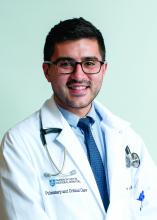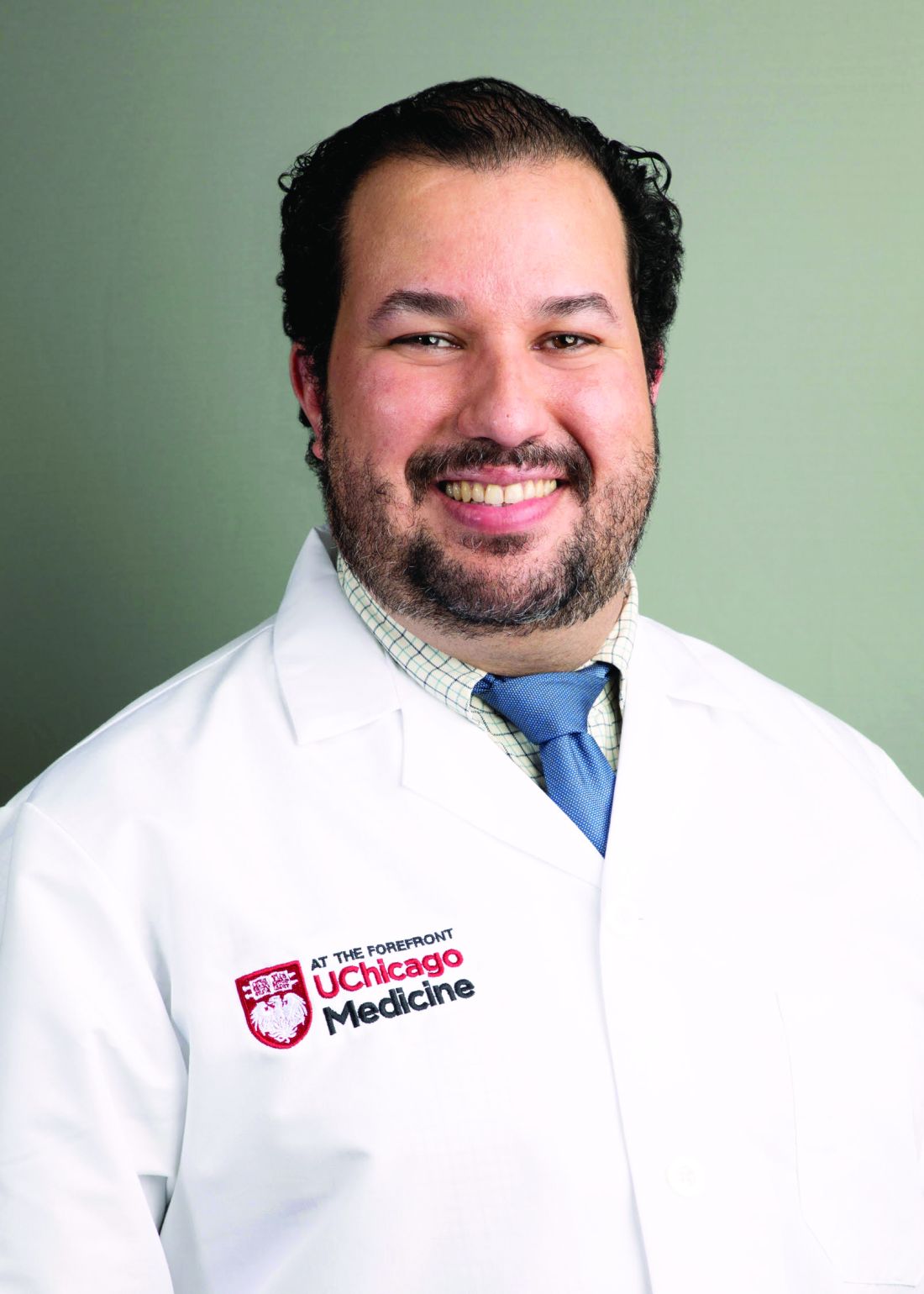User login
Should napping be recommended as a health behavior?
I was invited to a cardiology conference to talk about sleep, specifically the benefits of napping for health and cognition. After the talk, along with the usual questions related to my research, the cardiac surgeons in the room shifted the conversation to better resemble a group therapy session, sharing their harrowing personal tales of coping with sleep loss on the job. The most dramatic story involved a resident in a military hospital who, unable to avoid the effects of her mounting sleep loss, did a face plant into the open chest of the patient on the surgery table.
Epidemiology studies have associated insufficient sleep with increased disease risk, including cardiovascular and metabolic disease, diabetes, cancer, Alzheimer’s disease and related dementias, as well as early mortality. Laboratory studies that experimentally restrict sleep show deficits across many cognitive domains, including executive functions, long-term memory, as well as emotional processing and regulation. Insufficient sleep in adolescents can longitudinally predict depression, thought problems, and lower crystallized intelligence, as well as structural brain properties. In older adults, it can predict the onset of chronic disease, including Alzheimer’s disease. Repeated nights of insufficient sleep (eg, three to four nights of four to six hours of sleep) have been shown to dysregulate hormone release, elevate body temperature and heart rate, stimulate appetite, and create an imbalance between the two branches of the autonomic nervous system by prolonging sympathetic activity and reducing parasympathetic restorative activity.
Given this ever-increasing list of ill effects of poor sleep, the quest for an effective, inexpensive, and manageable intervention for sleep loss often leads to the question: What about naps? A nap is typically defined as a period of sleep between five minutes to three hours, although naps can occur at any hour, they are usually daytime sleep behaviors. Between 40% and 60% of adults nap regularly, at least once a week, and, excluding novelty nap boutiques, they are free of charge and require little management or oversight. Yet, for all their apparent positive aspects, the jury is still out on whether naps should be recommended as a sleep loss countermeasure due to the lack of agreement across studies as to their effects on health.
Naps are studied in primarily two scientific contexts: laboratory experimental studies and epidemiological studies. Laboratory experimental studies measure the effect of short bouts of sleep as a fatigue countermeasure or cognitive enhancer under total sleep deprivation, sleep restriction (four to six hours of nighttime sleep), or well-rested conditions. These experiments are usually conducted in small (20 to 30 participants) convenience samples of young adults without medical and mental health problems. Performance on computer-based cognitive tasks is tested before and after naps of varying durations. By varying nap durations, researchers can test the impact of specific sleep stages on performance improvement. For example, in well-rested, intermediate chronotype individuals, a 30-minute nap between 13:00 and 15:00 will contain mostly stage 2 sleep, whereas a nap of up to 60 minutes will include slow wave sleep, and a 90-minute nap will end on a bout of rapid eye movement sleep. Studies that vary nap duration and therefore sleep quality have demonstrated an important principle of sleep’s effect on the brain and cognitive processing, namely that each sleep stage uniquely contributes to different aspects of cognitive and emotional processing. And that when naps are inserted into a person’s day, even in well-rested conditions, they tend to perform better after the nap than if they had stayed awake. Napping leads to greater vigilance, attention, memory, motor performance, and creativity, among others, compared with equivalent wake periods.1,2 Compared with the common fatigue countermeasure—caffeine—naps enhance explicit memory performance to a greater extent.
In the second context, epidemiological studies examining the impact of napping on health outcomes are typically conducted in older, less healthy, less active populations who tend to have poorer eating habits, multiple comorbidities, psychological problems, and a wide range of socioeconomic status. The strength of this approach is the sample size, which allows for correlations between factors on a large scale while providing enough data to hopefully control for possible confounds (eg, demographics, SES, exercise and eating habits, comorbidities). However, as the data were usually collected by a different group with different goals than the current epidemiologist exploring the data, there can be a disconnect between the current study goals and the variables that were initially collected by the original research team. As such, the current researcher is left with a patchwork of dissimilar variables that they must find a way to organize to answer the current question.3
When applied to the question of health effects of napping, epidemiology researchers typically divide the population into two groups, either based on a yes or no response to a napping question, or a frequency score where those who indicate napping more than one, two, or three times a week are distinguished as nappers compared to non-nappers who don’t meet these criteria. As the field lacks standard definitions for categorizing nap behavior, it is left to the discretion of the researcher to make these decisions. Furthermore, there is usually little other information collected about napping habits that could be used to better characterize napping behavior, such as lifetime nap habits, intentional vs accidental napping, and specific motivations for napping. These secondary factors have been shown to significantly moderate the effects of napping in experimental studies.
Considering the challenges, it is not surprising that there is wide disagreement across studies as to the health effects of napping.4 On the negative side, some studies have demonstrated that napping leads to increased risk of cardiovascular disease, dementia, and mortality.5-7 On the positive side, large cohort studies that control for some of these limitations report that habitual napping can predict better health outcomes, including lower mortality risk, reduced cardiovascular disease, and increased brain volume.8,9 Furthermore, age complicates matters as recent studies in older adults report that more frequent napping may be associated with reduced propensity for sleep during morning hours, and late afternoon naps were associated with earlier melatonin onset and increased evening activity, suggesting greater circadian misalignment in nappers and strategic use of napping as an evening fatigue countermeasure. More frequent napping in older adults was also correlated with lower cognitive performance in one of three cognitive domains. These results implicate more frequent and later-in-the-day napping habits in older adults may indicate altered circadian rhythms and reduced early morning sleep, with a potential functional impact on memory function. However, the same cautionary note applies to these studies, as few nap characteristics were reported that would help interpret the study outcomes and guide recommendations.10 Thus, the important and timely question of whether napping should be recommended does not, as of yet, have an answer. For clinicians weighing the multidimensional factors associated with napping in efforts to give a considered response to their patients, I can offer a set of questions that may help with tailoring responses to each individual. A lifetime history of napping can be an indicator of a health-promoting behavior, whereas a relatively recent desire to nap may reflect an underlying comorbidity that increases fatigue, sleepiness, and unintentional daytime sleep. Motivation for napping can also be revealing, as the desire to nap may be masking symptoms of depression and anxiety.11 Nighttime sleep disturbance may promote napping or, in some cases, arise from too much napping and should always be considered as a primary health measurement. In conclusion, it’s important to recognize the significance of addressing nighttime sleep disturbance and the potential impact of napping on overall health. For many, napping can be an essential and potent habit that can be encouraged throughout the lifespan for its salutary influences.
References
1. Mednick S, Nakayama K, Stickgold R. Sleep-dependent learning: a nap is as good as a night. Nat Neurosci. 2003 Jul;6(7):697-8. doi: 10.1038/nn1078. PMID: 12819785.
2. Jones BJ, Spencer RMC. Role of Napping for Learning across the Lifespan. Curr Sleep Med Rep. 2020 Dec;6(4):290-297. Doi: 10.1007/s40675-020-00193-9. Epub 2020 Nov 12. PMID: 33816064; PMCID: PMC8011550.
3. Dunietz GL, Jansen EC, Hershner S, O’Brien LM, Peterson KE, Baylin A. Parallel Assessment Challenges in Nutritional and Sleep Epidemiology. Am J Epidemiol. 2021 Jun 1;190(6):954-961. doi: 10.1093/aje/kwaa230. PMID: 33089309; PMCID: PMC8168107.
4. Stang A. Daytime napping and health consequences: much epidemiologic work to do. Sleep Med. 2015 Jul;16(7):809-10. doi: 10.1016/j.sleep.2015.02.522. Epub 2015 Feb 14. PMID: 25772544.
5. Li, P., Gao, L., Yu, L., Zheng, X., Ulsa, M. C., Yang, H.-W., Gaba, A., Yaffe, K., Bennett, D. A., Buchman, A. S., Hu, K., & Leng, Y. (2022). Daytime napping and Alzheimer’s dementia: A potential bidirectional relationship. Alzheimer’s & Dementia : The Journal of the Alzheimer’s Association. https://doi.org/10.1002/alz.12636
6. Stang A, Dragano N., Moebus S, et al. Midday naps and the risk of coronary artery disease: results of the Heinz Nixdorf Recall Study Sleep, 35 (12) (2012), pp. 1705-1712
7. Wang K, Hu L, Wang L, Shu HN, Wang YT, Yuan Y, Cheng HP, Zhang YQ. Midday Napping, Nighttime Sleep, and Mortality: Prospective Cohort Evidence in China. Biomed Environ Sci. 2023 Aug 20;36(8):702-714. doi: 10.3967/bes2023.073. PMID: 37711082.
8. Naska A, Oikonomou E, Trichopoulou A, Psaltopoulou T, Trichopoulos D. Siesta in healthy adults and coronary mortality in the general population. Arch Intern Med. 2007 Feb 12;167(3):296-301. Doi: 10.1001/archinte.167.3.296. PMID: 17296887.
9. Paz V, Dashti HS, Garfield V. Is there an association between daytime napping, cognitive function, and brain volume? A Mendelian randomization study in the UK Biobank. Sleep Health. 2023 Oct;9(5):786-793. Doi: 10.1016/j.sleh.2023.05.002. Epub 2023 Jun 20. PMID: 37344293.
10. Mednick SC. Is napping in older adults problematic or productive? The answer may lie in the reason they nap. Sleep. 2024 May 10;47(5):zsae056. doi: 10.1093/sleep/zsae056. PMID: 38421680; PMCID: PMC11082470.
11. Duggan KA, McDevitt EA, Whitehurst LN, Mednick SC. To Nap, Perchance to DREAM: A Factor Analysis of College Students’ Self-Reported Reasons for Napping. Behav Sleep Med. 2018 Mar-Apr;16(2):135-153. doi: 10.1080/15402002.2016.1178115. Epub 2016 Jun 27. PMID: 27347727; PMCID: PMC5374038.
I was invited to a cardiology conference to talk about sleep, specifically the benefits of napping for health and cognition. After the talk, along with the usual questions related to my research, the cardiac surgeons in the room shifted the conversation to better resemble a group therapy session, sharing their harrowing personal tales of coping with sleep loss on the job. The most dramatic story involved a resident in a military hospital who, unable to avoid the effects of her mounting sleep loss, did a face plant into the open chest of the patient on the surgery table.
Epidemiology studies have associated insufficient sleep with increased disease risk, including cardiovascular and metabolic disease, diabetes, cancer, Alzheimer’s disease and related dementias, as well as early mortality. Laboratory studies that experimentally restrict sleep show deficits across many cognitive domains, including executive functions, long-term memory, as well as emotional processing and regulation. Insufficient sleep in adolescents can longitudinally predict depression, thought problems, and lower crystallized intelligence, as well as structural brain properties. In older adults, it can predict the onset of chronic disease, including Alzheimer’s disease. Repeated nights of insufficient sleep (eg, three to four nights of four to six hours of sleep) have been shown to dysregulate hormone release, elevate body temperature and heart rate, stimulate appetite, and create an imbalance between the two branches of the autonomic nervous system by prolonging sympathetic activity and reducing parasympathetic restorative activity.
Given this ever-increasing list of ill effects of poor sleep, the quest for an effective, inexpensive, and manageable intervention for sleep loss often leads to the question: What about naps? A nap is typically defined as a period of sleep between five minutes to three hours, although naps can occur at any hour, they are usually daytime sleep behaviors. Between 40% and 60% of adults nap regularly, at least once a week, and, excluding novelty nap boutiques, they are free of charge and require little management or oversight. Yet, for all their apparent positive aspects, the jury is still out on whether naps should be recommended as a sleep loss countermeasure due to the lack of agreement across studies as to their effects on health.
Naps are studied in primarily two scientific contexts: laboratory experimental studies and epidemiological studies. Laboratory experimental studies measure the effect of short bouts of sleep as a fatigue countermeasure or cognitive enhancer under total sleep deprivation, sleep restriction (four to six hours of nighttime sleep), or well-rested conditions. These experiments are usually conducted in small (20 to 30 participants) convenience samples of young adults without medical and mental health problems. Performance on computer-based cognitive tasks is tested before and after naps of varying durations. By varying nap durations, researchers can test the impact of specific sleep stages on performance improvement. For example, in well-rested, intermediate chronotype individuals, a 30-minute nap between 13:00 and 15:00 will contain mostly stage 2 sleep, whereas a nap of up to 60 minutes will include slow wave sleep, and a 90-minute nap will end on a bout of rapid eye movement sleep. Studies that vary nap duration and therefore sleep quality have demonstrated an important principle of sleep’s effect on the brain and cognitive processing, namely that each sleep stage uniquely contributes to different aspects of cognitive and emotional processing. And that when naps are inserted into a person’s day, even in well-rested conditions, they tend to perform better after the nap than if they had stayed awake. Napping leads to greater vigilance, attention, memory, motor performance, and creativity, among others, compared with equivalent wake periods.1,2 Compared with the common fatigue countermeasure—caffeine—naps enhance explicit memory performance to a greater extent.
In the second context, epidemiological studies examining the impact of napping on health outcomes are typically conducted in older, less healthy, less active populations who tend to have poorer eating habits, multiple comorbidities, psychological problems, and a wide range of socioeconomic status. The strength of this approach is the sample size, which allows for correlations between factors on a large scale while providing enough data to hopefully control for possible confounds (eg, demographics, SES, exercise and eating habits, comorbidities). However, as the data were usually collected by a different group with different goals than the current epidemiologist exploring the data, there can be a disconnect between the current study goals and the variables that were initially collected by the original research team. As such, the current researcher is left with a patchwork of dissimilar variables that they must find a way to organize to answer the current question.3
When applied to the question of health effects of napping, epidemiology researchers typically divide the population into two groups, either based on a yes or no response to a napping question, or a frequency score where those who indicate napping more than one, two, or three times a week are distinguished as nappers compared to non-nappers who don’t meet these criteria. As the field lacks standard definitions for categorizing nap behavior, it is left to the discretion of the researcher to make these decisions. Furthermore, there is usually little other information collected about napping habits that could be used to better characterize napping behavior, such as lifetime nap habits, intentional vs accidental napping, and specific motivations for napping. These secondary factors have been shown to significantly moderate the effects of napping in experimental studies.
Considering the challenges, it is not surprising that there is wide disagreement across studies as to the health effects of napping.4 On the negative side, some studies have demonstrated that napping leads to increased risk of cardiovascular disease, dementia, and mortality.5-7 On the positive side, large cohort studies that control for some of these limitations report that habitual napping can predict better health outcomes, including lower mortality risk, reduced cardiovascular disease, and increased brain volume.8,9 Furthermore, age complicates matters as recent studies in older adults report that more frequent napping may be associated with reduced propensity for sleep during morning hours, and late afternoon naps were associated with earlier melatonin onset and increased evening activity, suggesting greater circadian misalignment in nappers and strategic use of napping as an evening fatigue countermeasure. More frequent napping in older adults was also correlated with lower cognitive performance in one of three cognitive domains. These results implicate more frequent and later-in-the-day napping habits in older adults may indicate altered circadian rhythms and reduced early morning sleep, with a potential functional impact on memory function. However, the same cautionary note applies to these studies, as few nap characteristics were reported that would help interpret the study outcomes and guide recommendations.10 Thus, the important and timely question of whether napping should be recommended does not, as of yet, have an answer. For clinicians weighing the multidimensional factors associated with napping in efforts to give a considered response to their patients, I can offer a set of questions that may help with tailoring responses to each individual. A lifetime history of napping can be an indicator of a health-promoting behavior, whereas a relatively recent desire to nap may reflect an underlying comorbidity that increases fatigue, sleepiness, and unintentional daytime sleep. Motivation for napping can also be revealing, as the desire to nap may be masking symptoms of depression and anxiety.11 Nighttime sleep disturbance may promote napping or, in some cases, arise from too much napping and should always be considered as a primary health measurement. In conclusion, it’s important to recognize the significance of addressing nighttime sleep disturbance and the potential impact of napping on overall health. For many, napping can be an essential and potent habit that can be encouraged throughout the lifespan for its salutary influences.
References
1. Mednick S, Nakayama K, Stickgold R. Sleep-dependent learning: a nap is as good as a night. Nat Neurosci. 2003 Jul;6(7):697-8. doi: 10.1038/nn1078. PMID: 12819785.
2. Jones BJ, Spencer RMC. Role of Napping for Learning across the Lifespan. Curr Sleep Med Rep. 2020 Dec;6(4):290-297. Doi: 10.1007/s40675-020-00193-9. Epub 2020 Nov 12. PMID: 33816064; PMCID: PMC8011550.
3. Dunietz GL, Jansen EC, Hershner S, O’Brien LM, Peterson KE, Baylin A. Parallel Assessment Challenges in Nutritional and Sleep Epidemiology. Am J Epidemiol. 2021 Jun 1;190(6):954-961. doi: 10.1093/aje/kwaa230. PMID: 33089309; PMCID: PMC8168107.
4. Stang A. Daytime napping and health consequences: much epidemiologic work to do. Sleep Med. 2015 Jul;16(7):809-10. doi: 10.1016/j.sleep.2015.02.522. Epub 2015 Feb 14. PMID: 25772544.
5. Li, P., Gao, L., Yu, L., Zheng, X., Ulsa, M. C., Yang, H.-W., Gaba, A., Yaffe, K., Bennett, D. A., Buchman, A. S., Hu, K., & Leng, Y. (2022). Daytime napping and Alzheimer’s dementia: A potential bidirectional relationship. Alzheimer’s & Dementia : The Journal of the Alzheimer’s Association. https://doi.org/10.1002/alz.12636
6. Stang A, Dragano N., Moebus S, et al. Midday naps and the risk of coronary artery disease: results of the Heinz Nixdorf Recall Study Sleep, 35 (12) (2012), pp. 1705-1712
7. Wang K, Hu L, Wang L, Shu HN, Wang YT, Yuan Y, Cheng HP, Zhang YQ. Midday Napping, Nighttime Sleep, and Mortality: Prospective Cohort Evidence in China. Biomed Environ Sci. 2023 Aug 20;36(8):702-714. doi: 10.3967/bes2023.073. PMID: 37711082.
8. Naska A, Oikonomou E, Trichopoulou A, Psaltopoulou T, Trichopoulos D. Siesta in healthy adults and coronary mortality in the general population. Arch Intern Med. 2007 Feb 12;167(3):296-301. Doi: 10.1001/archinte.167.3.296. PMID: 17296887.
9. Paz V, Dashti HS, Garfield V. Is there an association between daytime napping, cognitive function, and brain volume? A Mendelian randomization study in the UK Biobank. Sleep Health. 2023 Oct;9(5):786-793. Doi: 10.1016/j.sleh.2023.05.002. Epub 2023 Jun 20. PMID: 37344293.
10. Mednick SC. Is napping in older adults problematic or productive? The answer may lie in the reason they nap. Sleep. 2024 May 10;47(5):zsae056. doi: 10.1093/sleep/zsae056. PMID: 38421680; PMCID: PMC11082470.
11. Duggan KA, McDevitt EA, Whitehurst LN, Mednick SC. To Nap, Perchance to DREAM: A Factor Analysis of College Students’ Self-Reported Reasons for Napping. Behav Sleep Med. 2018 Mar-Apr;16(2):135-153. doi: 10.1080/15402002.2016.1178115. Epub 2016 Jun 27. PMID: 27347727; PMCID: PMC5374038.
I was invited to a cardiology conference to talk about sleep, specifically the benefits of napping for health and cognition. After the talk, along with the usual questions related to my research, the cardiac surgeons in the room shifted the conversation to better resemble a group therapy session, sharing their harrowing personal tales of coping with sleep loss on the job. The most dramatic story involved a resident in a military hospital who, unable to avoid the effects of her mounting sleep loss, did a face plant into the open chest of the patient on the surgery table.
Epidemiology studies have associated insufficient sleep with increased disease risk, including cardiovascular and metabolic disease, diabetes, cancer, Alzheimer’s disease and related dementias, as well as early mortality. Laboratory studies that experimentally restrict sleep show deficits across many cognitive domains, including executive functions, long-term memory, as well as emotional processing and regulation. Insufficient sleep in adolescents can longitudinally predict depression, thought problems, and lower crystallized intelligence, as well as structural brain properties. In older adults, it can predict the onset of chronic disease, including Alzheimer’s disease. Repeated nights of insufficient sleep (eg, three to four nights of four to six hours of sleep) have been shown to dysregulate hormone release, elevate body temperature and heart rate, stimulate appetite, and create an imbalance between the two branches of the autonomic nervous system by prolonging sympathetic activity and reducing parasympathetic restorative activity.
Given this ever-increasing list of ill effects of poor sleep, the quest for an effective, inexpensive, and manageable intervention for sleep loss often leads to the question: What about naps? A nap is typically defined as a period of sleep between five minutes to three hours, although naps can occur at any hour, they are usually daytime sleep behaviors. Between 40% and 60% of adults nap regularly, at least once a week, and, excluding novelty nap boutiques, they are free of charge and require little management or oversight. Yet, for all their apparent positive aspects, the jury is still out on whether naps should be recommended as a sleep loss countermeasure due to the lack of agreement across studies as to their effects on health.
Naps are studied in primarily two scientific contexts: laboratory experimental studies and epidemiological studies. Laboratory experimental studies measure the effect of short bouts of sleep as a fatigue countermeasure or cognitive enhancer under total sleep deprivation, sleep restriction (four to six hours of nighttime sleep), or well-rested conditions. These experiments are usually conducted in small (20 to 30 participants) convenience samples of young adults without medical and mental health problems. Performance on computer-based cognitive tasks is tested before and after naps of varying durations. By varying nap durations, researchers can test the impact of specific sleep stages on performance improvement. For example, in well-rested, intermediate chronotype individuals, a 30-minute nap between 13:00 and 15:00 will contain mostly stage 2 sleep, whereas a nap of up to 60 minutes will include slow wave sleep, and a 90-minute nap will end on a bout of rapid eye movement sleep. Studies that vary nap duration and therefore sleep quality have demonstrated an important principle of sleep’s effect on the brain and cognitive processing, namely that each sleep stage uniquely contributes to different aspects of cognitive and emotional processing. And that when naps are inserted into a person’s day, even in well-rested conditions, they tend to perform better after the nap than if they had stayed awake. Napping leads to greater vigilance, attention, memory, motor performance, and creativity, among others, compared with equivalent wake periods.1,2 Compared with the common fatigue countermeasure—caffeine—naps enhance explicit memory performance to a greater extent.
In the second context, epidemiological studies examining the impact of napping on health outcomes are typically conducted in older, less healthy, less active populations who tend to have poorer eating habits, multiple comorbidities, psychological problems, and a wide range of socioeconomic status. The strength of this approach is the sample size, which allows for correlations between factors on a large scale while providing enough data to hopefully control for possible confounds (eg, demographics, SES, exercise and eating habits, comorbidities). However, as the data were usually collected by a different group with different goals than the current epidemiologist exploring the data, there can be a disconnect between the current study goals and the variables that were initially collected by the original research team. As such, the current researcher is left with a patchwork of dissimilar variables that they must find a way to organize to answer the current question.3
When applied to the question of health effects of napping, epidemiology researchers typically divide the population into two groups, either based on a yes or no response to a napping question, or a frequency score where those who indicate napping more than one, two, or three times a week are distinguished as nappers compared to non-nappers who don’t meet these criteria. As the field lacks standard definitions for categorizing nap behavior, it is left to the discretion of the researcher to make these decisions. Furthermore, there is usually little other information collected about napping habits that could be used to better characterize napping behavior, such as lifetime nap habits, intentional vs accidental napping, and specific motivations for napping. These secondary factors have been shown to significantly moderate the effects of napping in experimental studies.
Considering the challenges, it is not surprising that there is wide disagreement across studies as to the health effects of napping.4 On the negative side, some studies have demonstrated that napping leads to increased risk of cardiovascular disease, dementia, and mortality.5-7 On the positive side, large cohort studies that control for some of these limitations report that habitual napping can predict better health outcomes, including lower mortality risk, reduced cardiovascular disease, and increased brain volume.8,9 Furthermore, age complicates matters as recent studies in older adults report that more frequent napping may be associated with reduced propensity for sleep during morning hours, and late afternoon naps were associated with earlier melatonin onset and increased evening activity, suggesting greater circadian misalignment in nappers and strategic use of napping as an evening fatigue countermeasure. More frequent napping in older adults was also correlated with lower cognitive performance in one of three cognitive domains. These results implicate more frequent and later-in-the-day napping habits in older adults may indicate altered circadian rhythms and reduced early morning sleep, with a potential functional impact on memory function. However, the same cautionary note applies to these studies, as few nap characteristics were reported that would help interpret the study outcomes and guide recommendations.10 Thus, the important and timely question of whether napping should be recommended does not, as of yet, have an answer. For clinicians weighing the multidimensional factors associated with napping in efforts to give a considered response to their patients, I can offer a set of questions that may help with tailoring responses to each individual. A lifetime history of napping can be an indicator of a health-promoting behavior, whereas a relatively recent desire to nap may reflect an underlying comorbidity that increases fatigue, sleepiness, and unintentional daytime sleep. Motivation for napping can also be revealing, as the desire to nap may be masking symptoms of depression and anxiety.11 Nighttime sleep disturbance may promote napping or, in some cases, arise from too much napping and should always be considered as a primary health measurement. In conclusion, it’s important to recognize the significance of addressing nighttime sleep disturbance and the potential impact of napping on overall health. For many, napping can be an essential and potent habit that can be encouraged throughout the lifespan for its salutary influences.
References
1. Mednick S, Nakayama K, Stickgold R. Sleep-dependent learning: a nap is as good as a night. Nat Neurosci. 2003 Jul;6(7):697-8. doi: 10.1038/nn1078. PMID: 12819785.
2. Jones BJ, Spencer RMC. Role of Napping for Learning across the Lifespan. Curr Sleep Med Rep. 2020 Dec;6(4):290-297. Doi: 10.1007/s40675-020-00193-9. Epub 2020 Nov 12. PMID: 33816064; PMCID: PMC8011550.
3. Dunietz GL, Jansen EC, Hershner S, O’Brien LM, Peterson KE, Baylin A. Parallel Assessment Challenges in Nutritional and Sleep Epidemiology. Am J Epidemiol. 2021 Jun 1;190(6):954-961. doi: 10.1093/aje/kwaa230. PMID: 33089309; PMCID: PMC8168107.
4. Stang A. Daytime napping and health consequences: much epidemiologic work to do. Sleep Med. 2015 Jul;16(7):809-10. doi: 10.1016/j.sleep.2015.02.522. Epub 2015 Feb 14. PMID: 25772544.
5. Li, P., Gao, L., Yu, L., Zheng, X., Ulsa, M. C., Yang, H.-W., Gaba, A., Yaffe, K., Bennett, D. A., Buchman, A. S., Hu, K., & Leng, Y. (2022). Daytime napping and Alzheimer’s dementia: A potential bidirectional relationship. Alzheimer’s & Dementia : The Journal of the Alzheimer’s Association. https://doi.org/10.1002/alz.12636
6. Stang A, Dragano N., Moebus S, et al. Midday naps and the risk of coronary artery disease: results of the Heinz Nixdorf Recall Study Sleep, 35 (12) (2012), pp. 1705-1712
7. Wang K, Hu L, Wang L, Shu HN, Wang YT, Yuan Y, Cheng HP, Zhang YQ. Midday Napping, Nighttime Sleep, and Mortality: Prospective Cohort Evidence in China. Biomed Environ Sci. 2023 Aug 20;36(8):702-714. doi: 10.3967/bes2023.073. PMID: 37711082.
8. Naska A, Oikonomou E, Trichopoulou A, Psaltopoulou T, Trichopoulos D. Siesta in healthy adults and coronary mortality in the general population. Arch Intern Med. 2007 Feb 12;167(3):296-301. Doi: 10.1001/archinte.167.3.296. PMID: 17296887.
9. Paz V, Dashti HS, Garfield V. Is there an association between daytime napping, cognitive function, and brain volume? A Mendelian randomization study in the UK Biobank. Sleep Health. 2023 Oct;9(5):786-793. Doi: 10.1016/j.sleh.2023.05.002. Epub 2023 Jun 20. PMID: 37344293.
10. Mednick SC. Is napping in older adults problematic or productive? The answer may lie in the reason they nap. Sleep. 2024 May 10;47(5):zsae056. doi: 10.1093/sleep/zsae056. PMID: 38421680; PMCID: PMC11082470.
11. Duggan KA, McDevitt EA, Whitehurst LN, Mednick SC. To Nap, Perchance to DREAM: A Factor Analysis of College Students’ Self-Reported Reasons for Napping. Behav Sleep Med. 2018 Mar-Apr;16(2):135-153. doi: 10.1080/15402002.2016.1178115. Epub 2016 Jun 27. PMID: 27347727; PMCID: PMC5374038.
Biomarker use in ARDS resulting from COVID-19 infection
There is renewed interest in the use of immunomodulator therapies in patients with acute hypoxemic respiratory failure.
Beyond COVID-19, studies have also shown corticosteroid therapy improves clinical outcomes in patients with severe community-acquired pneumonia.3 However, the overwhelming majority of studies identifying plasma biomarkers that are associated with clinical outcomes in severe lung injury predate the routine use of corticosteroids.4 Two investigators at Massachusetts General Hospital, Jehan W. Alladina, MD, and George A. Alba, MD, performed a study to assess whether plasma biomarkers previously associated with clinical outcomes in ARDS maintained their predictive value in the setting of widespread immunomodulator therapy in the ICU. Drs. Alladina and Alba are physician-scientists and codirectors of the Program for Advancing Critical Care Translational Science at Massachusetts General Hospital in Boston.
In a study published in CHEST®Critical Care earlier this year, they prospectively enrolled patients with ARDS due to confirmed SARS-CoV-2 infection during the second wave of the COVID-19 pandemic from December 31, 2020, to March 31, 2021, at Massachusetts General Hospital.5 Plasma samples were collected within 24 hours of intubation for mechanical ventilation for protein analysis in 69 patients. Baseline demographics included a mean age of 62 plus or minus 15 years and a BMI of 31 plus or minus 8, and 45% were female. The median PaO2 to FiO2 ratio was 174 mm Hg, consistent with moderate ARDS, and the median duration of ventilation was 17 days. The patients had a median modified sequential organ failure assessment score of 8.5, and in-hospital mortality was 44% by 60 days. Notably, all patients in this cohort received steroids during their ICU stay.
Interestingly, the study investigators found no association between clinical outcomes and circulating proteins implicated in inflammation (eg, interleukin [IL]-6, IL-8), epithelial injury (eg, soluble receptor for advanced glycation end products, surfactant protein D), or coagulation (eg, D-dimer, tissue factor). However, four endothelial biomarkers—von Willebrand factor A2 domain; angiopoietin-2; syndecan-1; and neural precursor cell expressed, developmentally downregulated 9 (NEDD9)—were associated with 60-day mortality after adjusting for age, sex, and severity of illness. A sensitivity analysis, in which patients treated with the IL-6 inhibitor tocilizumab (n=4) were excluded, showed similar results.
Of the endothelial proteins, NEDD9 demonstrated the greatest effect size in its association with mortality in patients with ARDS due to COVID-19 who were treated with immunomodulators. NEDD9 is a scaffolding protein highly expressed in the pulmonary vascular endothelium, but its role in ARDS is not well known. In pulmonary vascular disease, plasma levels are associated with adverse pulmonary hemodynamics and clinical outcomes. Pulmonary artery endothelial NEDD9 is upregulated by cellular hypoxia and can mediate platelet-endothelial adhesion by interacting with P-selectin on the surface of activated platelets.6 Additionally, there is evidence of increased pulmonary endothelial NEDD9 expression and colocalization with fibrin within pulmonary arteries in lung tissue of patients who died from ARDS due to COVID-19.7 Thus, NEDD9 may be an important mediator of pulmonary vascular dysfunction observed in ARDS and could be a novel biomarker for patient subphenotyping and prognostication of clinical outcomes.
In summary, in a cohort of patients with COVID-19 ARDS uniformly treated with corticosteroids, plasma biomarkers of inflammation, coagulation, and epithelial injury were not associated with clinical outcomes, but endothelial biomarkers remained prognostic. It is biologically plausible that immunomodulators could attenuate the association between inflammatory biomarkers and patient outcomes. The findings of this study highlight the association of endothelial biomarkers with clinical outcomes in patients with COVID-19 ARDS treated with immunomodulators and warrant prospective validation, especially with the increasing evidence-based use of antiinflammatory therapy in acute lung injury. However, there are several important limitations to consider, including a small sample size from a single institution that precludes any definitive conclusions regarding any negative associations. Moreover, the single time point studied (the day of initiation of mechanical ventilation) and absence of a comparator group do not allow a comprehensive evaluation of the impact of antiinflammatory therapies across the trajectory of disease. Whether the findings are generalizable to all patients with ARDS treated with immunomodulators also remains unknown.
Overall, these data suggest that circulating signatures previously associated with ARDS, particularly those related to systemic inflammation, may have limited prognostic utility in the era of increasing immunomodulator use in critical illness. A deeper understanding of the pathobiology of ARDS, including the complex interplay with systemic immunomodulation, is needed to identify prognostic biomarkers and targeted therapies that improve patient outcomes.
Both authors work in the Division of Pulmonary and Critical Care Medicine, Massachusetts General Hospital, Harvard Medical School, in Boston.
References
1. Horby P, Lim WS, Emberson JR, et al; RECOVERY Collaborative Group. Dexamethasone in hospitalized patients with Covid-19. N Engl J Med. 2021;384(8):693-704.
2. Tomazini BM, Maia IS, Cavalcanti AB, et al. Effect of dexamethasone on days alive and ventilator-free in patients with moderate or severe acute respiratory distress syndrome and COVID-19. JAMA. 2020;324(13):1-11.
3. Dequin P-F, Meziani F, Quenot J-P, et al. Hydrocortisone in severe community-acquired pneumonia. N Engl J Med. 2023;388(21):1931-1941.
4. Del Valle DM, Kim-Schulze S, Huang H-H, et al. An inflammatory cytokine signature predicts COVID-19 severity and survival. Nat Med. 2020;26(10):1636-1643.
5. Alladina JW, Giacona FL, Haring AM, et al. Circulating biomarkers of endothelial dysfunction associated with ventilatory ratio and mortality in ARDS resulting from SARS-CoV-2 infection treated with antiinflammatory therapies. CHEST Crit Care. 2024;2(2):100054.
6. Alba GA, Samokhin AO, Wang R-S, et al. NEDD9 is a novel and modifiable mediator of platelet-endothelial adhesion in the pulmonary circulation. Am J Respir Crit Care Med. 2021;203(12):1533-1545.
7. Alba GA, Samokhin AO, Wang R-S, et al. Pulmonary endothelial NEDD9 and the prothrombotic pathophenotype of acute respiratory distress syndrome due to SARS‐CoV‐2 infection. Pulm Circ. 2022;12(2):e12071.
There is renewed interest in the use of immunomodulator therapies in patients with acute hypoxemic respiratory failure.
Beyond COVID-19, studies have also shown corticosteroid therapy improves clinical outcomes in patients with severe community-acquired pneumonia.3 However, the overwhelming majority of studies identifying plasma biomarkers that are associated with clinical outcomes in severe lung injury predate the routine use of corticosteroids.4 Two investigators at Massachusetts General Hospital, Jehan W. Alladina, MD, and George A. Alba, MD, performed a study to assess whether plasma biomarkers previously associated with clinical outcomes in ARDS maintained their predictive value in the setting of widespread immunomodulator therapy in the ICU. Drs. Alladina and Alba are physician-scientists and codirectors of the Program for Advancing Critical Care Translational Science at Massachusetts General Hospital in Boston.
In a study published in CHEST®Critical Care earlier this year, they prospectively enrolled patients with ARDS due to confirmed SARS-CoV-2 infection during the second wave of the COVID-19 pandemic from December 31, 2020, to March 31, 2021, at Massachusetts General Hospital.5 Plasma samples were collected within 24 hours of intubation for mechanical ventilation for protein analysis in 69 patients. Baseline demographics included a mean age of 62 plus or minus 15 years and a BMI of 31 plus or minus 8, and 45% were female. The median PaO2 to FiO2 ratio was 174 mm Hg, consistent with moderate ARDS, and the median duration of ventilation was 17 days. The patients had a median modified sequential organ failure assessment score of 8.5, and in-hospital mortality was 44% by 60 days. Notably, all patients in this cohort received steroids during their ICU stay.
Interestingly, the study investigators found no association between clinical outcomes and circulating proteins implicated in inflammation (eg, interleukin [IL]-6, IL-8), epithelial injury (eg, soluble receptor for advanced glycation end products, surfactant protein D), or coagulation (eg, D-dimer, tissue factor). However, four endothelial biomarkers—von Willebrand factor A2 domain; angiopoietin-2; syndecan-1; and neural precursor cell expressed, developmentally downregulated 9 (NEDD9)—were associated with 60-day mortality after adjusting for age, sex, and severity of illness. A sensitivity analysis, in which patients treated with the IL-6 inhibitor tocilizumab (n=4) were excluded, showed similar results.
Of the endothelial proteins, NEDD9 demonstrated the greatest effect size in its association with mortality in patients with ARDS due to COVID-19 who were treated with immunomodulators. NEDD9 is a scaffolding protein highly expressed in the pulmonary vascular endothelium, but its role in ARDS is not well known. In pulmonary vascular disease, plasma levels are associated with adverse pulmonary hemodynamics and clinical outcomes. Pulmonary artery endothelial NEDD9 is upregulated by cellular hypoxia and can mediate platelet-endothelial adhesion by interacting with P-selectin on the surface of activated platelets.6 Additionally, there is evidence of increased pulmonary endothelial NEDD9 expression and colocalization with fibrin within pulmonary arteries in lung tissue of patients who died from ARDS due to COVID-19.7 Thus, NEDD9 may be an important mediator of pulmonary vascular dysfunction observed in ARDS and could be a novel biomarker for patient subphenotyping and prognostication of clinical outcomes.
In summary, in a cohort of patients with COVID-19 ARDS uniformly treated with corticosteroids, plasma biomarkers of inflammation, coagulation, and epithelial injury were not associated with clinical outcomes, but endothelial biomarkers remained prognostic. It is biologically plausible that immunomodulators could attenuate the association between inflammatory biomarkers and patient outcomes. The findings of this study highlight the association of endothelial biomarkers with clinical outcomes in patients with COVID-19 ARDS treated with immunomodulators and warrant prospective validation, especially with the increasing evidence-based use of antiinflammatory therapy in acute lung injury. However, there are several important limitations to consider, including a small sample size from a single institution that precludes any definitive conclusions regarding any negative associations. Moreover, the single time point studied (the day of initiation of mechanical ventilation) and absence of a comparator group do not allow a comprehensive evaluation of the impact of antiinflammatory therapies across the trajectory of disease. Whether the findings are generalizable to all patients with ARDS treated with immunomodulators also remains unknown.
Overall, these data suggest that circulating signatures previously associated with ARDS, particularly those related to systemic inflammation, may have limited prognostic utility in the era of increasing immunomodulator use in critical illness. A deeper understanding of the pathobiology of ARDS, including the complex interplay with systemic immunomodulation, is needed to identify prognostic biomarkers and targeted therapies that improve patient outcomes.
Both authors work in the Division of Pulmonary and Critical Care Medicine, Massachusetts General Hospital, Harvard Medical School, in Boston.
References
1. Horby P, Lim WS, Emberson JR, et al; RECOVERY Collaborative Group. Dexamethasone in hospitalized patients with Covid-19. N Engl J Med. 2021;384(8):693-704.
2. Tomazini BM, Maia IS, Cavalcanti AB, et al. Effect of dexamethasone on days alive and ventilator-free in patients with moderate or severe acute respiratory distress syndrome and COVID-19. JAMA. 2020;324(13):1-11.
3. Dequin P-F, Meziani F, Quenot J-P, et al. Hydrocortisone in severe community-acquired pneumonia. N Engl J Med. 2023;388(21):1931-1941.
4. Del Valle DM, Kim-Schulze S, Huang H-H, et al. An inflammatory cytokine signature predicts COVID-19 severity and survival. Nat Med. 2020;26(10):1636-1643.
5. Alladina JW, Giacona FL, Haring AM, et al. Circulating biomarkers of endothelial dysfunction associated with ventilatory ratio and mortality in ARDS resulting from SARS-CoV-2 infection treated with antiinflammatory therapies. CHEST Crit Care. 2024;2(2):100054.
6. Alba GA, Samokhin AO, Wang R-S, et al. NEDD9 is a novel and modifiable mediator of platelet-endothelial adhesion in the pulmonary circulation. Am J Respir Crit Care Med. 2021;203(12):1533-1545.
7. Alba GA, Samokhin AO, Wang R-S, et al. Pulmonary endothelial NEDD9 and the prothrombotic pathophenotype of acute respiratory distress syndrome due to SARS‐CoV‐2 infection. Pulm Circ. 2022;12(2):e12071.
There is renewed interest in the use of immunomodulator therapies in patients with acute hypoxemic respiratory failure.
Beyond COVID-19, studies have also shown corticosteroid therapy improves clinical outcomes in patients with severe community-acquired pneumonia.3 However, the overwhelming majority of studies identifying plasma biomarkers that are associated with clinical outcomes in severe lung injury predate the routine use of corticosteroids.4 Two investigators at Massachusetts General Hospital, Jehan W. Alladina, MD, and George A. Alba, MD, performed a study to assess whether plasma biomarkers previously associated with clinical outcomes in ARDS maintained their predictive value in the setting of widespread immunomodulator therapy in the ICU. Drs. Alladina and Alba are physician-scientists and codirectors of the Program for Advancing Critical Care Translational Science at Massachusetts General Hospital in Boston.
In a study published in CHEST®Critical Care earlier this year, they prospectively enrolled patients with ARDS due to confirmed SARS-CoV-2 infection during the second wave of the COVID-19 pandemic from December 31, 2020, to March 31, 2021, at Massachusetts General Hospital.5 Plasma samples were collected within 24 hours of intubation for mechanical ventilation for protein analysis in 69 patients. Baseline demographics included a mean age of 62 plus or minus 15 years and a BMI of 31 plus or minus 8, and 45% were female. The median PaO2 to FiO2 ratio was 174 mm Hg, consistent with moderate ARDS, and the median duration of ventilation was 17 days. The patients had a median modified sequential organ failure assessment score of 8.5, and in-hospital mortality was 44% by 60 days. Notably, all patients in this cohort received steroids during their ICU stay.
Interestingly, the study investigators found no association between clinical outcomes and circulating proteins implicated in inflammation (eg, interleukin [IL]-6, IL-8), epithelial injury (eg, soluble receptor for advanced glycation end products, surfactant protein D), or coagulation (eg, D-dimer, tissue factor). However, four endothelial biomarkers—von Willebrand factor A2 domain; angiopoietin-2; syndecan-1; and neural precursor cell expressed, developmentally downregulated 9 (NEDD9)—were associated with 60-day mortality after adjusting for age, sex, and severity of illness. A sensitivity analysis, in which patients treated with the IL-6 inhibitor tocilizumab (n=4) were excluded, showed similar results.
Of the endothelial proteins, NEDD9 demonstrated the greatest effect size in its association with mortality in patients with ARDS due to COVID-19 who were treated with immunomodulators. NEDD9 is a scaffolding protein highly expressed in the pulmonary vascular endothelium, but its role in ARDS is not well known. In pulmonary vascular disease, plasma levels are associated with adverse pulmonary hemodynamics and clinical outcomes. Pulmonary artery endothelial NEDD9 is upregulated by cellular hypoxia and can mediate platelet-endothelial adhesion by interacting with P-selectin on the surface of activated platelets.6 Additionally, there is evidence of increased pulmonary endothelial NEDD9 expression and colocalization with fibrin within pulmonary arteries in lung tissue of patients who died from ARDS due to COVID-19.7 Thus, NEDD9 may be an important mediator of pulmonary vascular dysfunction observed in ARDS and could be a novel biomarker for patient subphenotyping and prognostication of clinical outcomes.
In summary, in a cohort of patients with COVID-19 ARDS uniformly treated with corticosteroids, plasma biomarkers of inflammation, coagulation, and epithelial injury were not associated with clinical outcomes, but endothelial biomarkers remained prognostic. It is biologically plausible that immunomodulators could attenuate the association between inflammatory biomarkers and patient outcomes. The findings of this study highlight the association of endothelial biomarkers with clinical outcomes in patients with COVID-19 ARDS treated with immunomodulators and warrant prospective validation, especially with the increasing evidence-based use of antiinflammatory therapy in acute lung injury. However, there are several important limitations to consider, including a small sample size from a single institution that precludes any definitive conclusions regarding any negative associations. Moreover, the single time point studied (the day of initiation of mechanical ventilation) and absence of a comparator group do not allow a comprehensive evaluation of the impact of antiinflammatory therapies across the trajectory of disease. Whether the findings are generalizable to all patients with ARDS treated with immunomodulators also remains unknown.
Overall, these data suggest that circulating signatures previously associated with ARDS, particularly those related to systemic inflammation, may have limited prognostic utility in the era of increasing immunomodulator use in critical illness. A deeper understanding of the pathobiology of ARDS, including the complex interplay with systemic immunomodulation, is needed to identify prognostic biomarkers and targeted therapies that improve patient outcomes.
Both authors work in the Division of Pulmonary and Critical Care Medicine, Massachusetts General Hospital, Harvard Medical School, in Boston.
References
1. Horby P, Lim WS, Emberson JR, et al; RECOVERY Collaborative Group. Dexamethasone in hospitalized patients with Covid-19. N Engl J Med. 2021;384(8):693-704.
2. Tomazini BM, Maia IS, Cavalcanti AB, et al. Effect of dexamethasone on days alive and ventilator-free in patients with moderate or severe acute respiratory distress syndrome and COVID-19. JAMA. 2020;324(13):1-11.
3. Dequin P-F, Meziani F, Quenot J-P, et al. Hydrocortisone in severe community-acquired pneumonia. N Engl J Med. 2023;388(21):1931-1941.
4. Del Valle DM, Kim-Schulze S, Huang H-H, et al. An inflammatory cytokine signature predicts COVID-19 severity and survival. Nat Med. 2020;26(10):1636-1643.
5. Alladina JW, Giacona FL, Haring AM, et al. Circulating biomarkers of endothelial dysfunction associated with ventilatory ratio and mortality in ARDS resulting from SARS-CoV-2 infection treated with antiinflammatory therapies. CHEST Crit Care. 2024;2(2):100054.
6. Alba GA, Samokhin AO, Wang R-S, et al. NEDD9 is a novel and modifiable mediator of platelet-endothelial adhesion in the pulmonary circulation. Am J Respir Crit Care Med. 2021;203(12):1533-1545.
7. Alba GA, Samokhin AO, Wang R-S, et al. Pulmonary endothelial NEDD9 and the prothrombotic pathophenotype of acute respiratory distress syndrome due to SARS‐CoV‐2 infection. Pulm Circ. 2022;12(2):e12071.
Pseudomonas infection in patients with noncystic fibrosis bronchiectasis
Pseudomonas aeruginosa is a clinically important organism that infects patients with noncystic fibrosis bronchiectasis (NCFB). In the United States, the estimated prevalence of NCFB is 213 per 100,000 across all age groups and 813 per 100,000 in the over 65 age group.1 A retrospective cohort study suggests the incidence of NCFB as ascertained from International Classification of Diseases codes may significantly underestimate its true prevalence.2
As the incidence of patients with NCFB continues to increase, the impact of the Pseudomonas infection is expected to grow. A recent retrospective cohort study of commercial claims from IQVIA’s PharMetrics Plus database for the period 2006 to 2020 showed that patients with NCFB and Pseudomonas infection had on average 2.58 hospital admissions per year, with a mean length of stay of 9.94 (± 11.06) days, compared with 1.18 admissions per year, with a mean length of stay of 6.5 (± 8.42) days, in patients with Pseudomonas-negative NCFB. The same trend applied to 30-day readmissions and ICU admissions, 1.32 (± 2.51 days) vs 0.47 (± 1.30 days) and 0.95 (± 1.62 days) vs 0.33 (± 0.76 days), respectively. The differential cost of care per patient per year between patients with NCFB with and without Pseudomonas infection ranged from $55,225 to $315,901.3
Recent data from the United States Bronchiectasis Registry showed the probability of acquiring Pseudomonas aeruginosa was 3% annually.4 The prevalence of Pseudomonas infection in a large, geographically diverse cohort in the United States was quoted at 15%.5 A retrospective analysis of the European Bronchiectasis Registry database showed Pseudomonas infection was the most commonly isolated pathogen (21.8%).6
Given the high incidence and prevalence of NCFB, the high prevalence of Pseudomonas infection in patients with NCFB, and the associated costs and morbidity from infection, identifying effective treatments has become a priority. The British, Spanish (SEPAR), South African, and European bronchiectasis guidelines outline several antibiotic regimens meant to achieve eradication. Generally, there is induction with a (1) quinolone, (2) β-lactam + aminoglycoside, or (3) quinolone with an inhaled antibiotic followed by three months of maintenance inhaled antibiotics.7-10 SEPAR allows for retreatment for recurrence at any time during the first year with any regimen.
For chronic Pseudomonas infection, SEPAR recommends treatment with inhaled antibiotics for patients with more than two exacerbations or one hospitalization, while the threshold in the British and European guidelines is more than three exacerbations. Azithromycin may be used for those who are intolerant or allergic to the nebulized antibiotics. It is worth noting that in the United States, the antibiotics colistin, ciprofloxacin, aztreonam, gentamicin, and tobramycin are administered off label for this indication. A systematic review found a 10% rate of bronchospasm in the treated group compared with 2.3% in the control group, and premedication with albuterol is often needed.11
Unfortunately, the data supporting the listed eradication and suppressive regimens are weak. A systematic review and meta-analysis of six observational studies including 289 patients showed a 12-month eradication rate of only 40% (95% CI, 34-45; P < 0.00001; I2 = 0).12 These results are disappointing and identify a need for further research into the manner in which Pseudomonas infection interacts with the host lung.
We currently know Pseudomonas infection evades antibiotics and host defenses by accumulating mutations and deletions. These include loss-of-function mutations in mucA (mucoidy), lasR (quorum-sensing), mexS (regulates the antibiotic efflux pump), and other genes related to the production of the polysaccharides Psl and Pel (which contribute to biofilm formation).13 There may also be differences in low and high bacteria microbial networks that interact differently with host cytokines to create an unstable environment that predisposes to exacerbation.14
In an attempt to improve our eradication and suppression rates, investigators have begun to target specific aspects of Pseudomonas infection behavior. The GREAT-2 trial compares gremubamab (a bivalent, bispecific, monoclonal antibody targeting Psl exopolysaccharide and the type 3 secretion system component of PcrV) with placebo in patients with chronic Pseudomonas infection. A phase II trial with the phosphodiesterase inhibitor esifentrine, a phase III trial with a reversible DPP1 inhibitor called brensocatib (ASPEN), and a phase II trial with the CatC inhibitor BI 1291583 (Airleaf) are also being conducted. Each of these agents targets mediators of neutrophil inflammation.
In summary, NCFB with Pseudomonas infection is common and leads to an increase in costs, respiratory exacerbations, and hospitalizations. While eradication and suppression are recommended, they are difficult to achieve and require sustained durations of expensive medications that can be difficult to tolerate. Antibiotic therapies will continue to be studied (the ERASE randomized controlled trial to investigate the efficacy and safety of tobramycin to eradicate Pseudomonas infection is currently underway), but targeted therapies represent a promising new approach to combating this stubbornly resistant bacteria. The NCFB community will be watching closely to see whether medicines targeting molecular behavior and host interaction can achieve what antibiotic regimens thus far have not: consistent and sustainable eradication.
Dr. Green is Assistant Professor in Medicine, Medical Director, Bronchiectasis Program, UMass Chan/Baystate Health, Chest Infections Section, Member-at-Large
References
1. Weycker D, Hansen GL, Seifer FD. Prevalence and incidence of noncystic fibrosis bronchiectasis among US adults in 2013. Chron Respir Dis. 2017;14(4):377-384. doi: 10.1177/1479972317709649
2. Green O, Liautaud S, Knee A, Modahl L. Measuring accuracy of International Classification of Diseases codes in identification of patients with non-cystic fibrosis bronchiectasis. ERJ Open Res. 2024;10(2):00715-2023. doi: 10.1183/23120541.00715-2023
3. Franklin M, Minshall ME, Pontenani F, Devarajan S. Impact of Pseudomonas aeruginosa on resource utilization and costs in patients with exacerbated non-cystic fibrosis bronchiectasis. J Med Econ. 2024;27(1):671-677. doi: 10.1080/13696998.2024.2340382
4. Aksamit TR, Locantore N, Addrizzo-Harris D, et al. Five-year outcomes among U.S. bronchiectasis and NTM research registry patients. Am J Respir Crit Care Med. Accepted manuscript. Published online April 26, 2024.
5. Dean SG, Blakney RA, Ricotta EE, et al. Bronchiectasis-associated infections and outcomes in a large, geographically diverse electronic health record cohort in the United States. BMC Pulm Med. 2024;24(1):172. doi: 10.1186/s12890-024-02973-3
6. Chalmers JD, Polverino E, Crichton ML, et al. Bronchiectasis in Europe: data on disease characteristics from the European Bronchiectasis registry (EMBARC). Lancet Respir Med. 2023;11(7):637-649. doi: 10.1016/S2213-2600(23)00093-0
7. Polverino E, Goeminne PC, McDonnell MJ, et al. European Respiratory Society guidelines for the management of adult bronchiectasis. Eur Respir J. 2017;50(3):1700629. doi: 10.1183/13993003.00629-2017
8. Martínez-García MÁ, Máiz L, Olveira C, et al. Spanish guidelines on treatment of bronchiectasis in adults. Arch Bronconeumol. 2018;54(2):88-98. doi: 10.1016/j.arbres.2017.07.016
9. Hill AT, Sullivan AL, Chalmers JD, et al. British Thoracic Society guideline for bronchiectasis in adults. Thorax. 2019;74(Suppl 1):1-69. doi: 10.1136/thoraxjnl-2018-212463
10. Goolam Mahomed A, Maasdorp SD, Barnes R, et al. South African Thoracic Society position statement on the management of non-cystic fibrosis bronchiectasis in adults: 2023. Afr J Thorac Crit Care Med. 2023;29(2):10.7196/AJTCCM. 2023.v29i2.647. doi: 10.7196/AJTCCM.2023.v29i2.647
11. Brodt AM, Stovold E, Zhang L. Inhaled antibiotics for stable non-cystic fibrosis bronchiectasis: a systematic review. Eur Respir J. 2014;44(2):382-393. doi: 10.1183/09031936.00018414
12. Conceição M, Shteinberg M, Goeminne P, Altenburg J, Chalmers JD. Eradication treatment for Pseudomonas aeruginosa infection in adults with bronchiectasis: a systematic review and meta-analysis. Eur Respir Rev. 2024;33(171):230178. doi: 10.1183/16000617.0178-2023
13. Hilliam Y, Moore MP, Lamont IL, et al. Pseudomonas aeruginosa adaptation and diversification in the non-cystic fibrosis bronchiectasis lung. Eur Respir J. 2017;49(4):1602108. doi: 10.1183/13993003.02108-2016
14. Gramegna A, Kumar Narayana J, Amati F, et al. Microbial inflammatory networks in bronchiectasis exacerbators with Pseudomonas aeruginosa. Chest. 2023;164(1):65-68. doi: 10.1016/j.chest.2023.02.014
Pseudomonas aeruginosa is a clinically important organism that infects patients with noncystic fibrosis bronchiectasis (NCFB). In the United States, the estimated prevalence of NCFB is 213 per 100,000 across all age groups and 813 per 100,000 in the over 65 age group.1 A retrospective cohort study suggests the incidence of NCFB as ascertained from International Classification of Diseases codes may significantly underestimate its true prevalence.2
As the incidence of patients with NCFB continues to increase, the impact of the Pseudomonas infection is expected to grow. A recent retrospective cohort study of commercial claims from IQVIA’s PharMetrics Plus database for the period 2006 to 2020 showed that patients with NCFB and Pseudomonas infection had on average 2.58 hospital admissions per year, with a mean length of stay of 9.94 (± 11.06) days, compared with 1.18 admissions per year, with a mean length of stay of 6.5 (± 8.42) days, in patients with Pseudomonas-negative NCFB. The same trend applied to 30-day readmissions and ICU admissions, 1.32 (± 2.51 days) vs 0.47 (± 1.30 days) and 0.95 (± 1.62 days) vs 0.33 (± 0.76 days), respectively. The differential cost of care per patient per year between patients with NCFB with and without Pseudomonas infection ranged from $55,225 to $315,901.3
Recent data from the United States Bronchiectasis Registry showed the probability of acquiring Pseudomonas aeruginosa was 3% annually.4 The prevalence of Pseudomonas infection in a large, geographically diverse cohort in the United States was quoted at 15%.5 A retrospective analysis of the European Bronchiectasis Registry database showed Pseudomonas infection was the most commonly isolated pathogen (21.8%).6
Given the high incidence and prevalence of NCFB, the high prevalence of Pseudomonas infection in patients with NCFB, and the associated costs and morbidity from infection, identifying effective treatments has become a priority. The British, Spanish (SEPAR), South African, and European bronchiectasis guidelines outline several antibiotic regimens meant to achieve eradication. Generally, there is induction with a (1) quinolone, (2) β-lactam + aminoglycoside, or (3) quinolone with an inhaled antibiotic followed by three months of maintenance inhaled antibiotics.7-10 SEPAR allows for retreatment for recurrence at any time during the first year with any regimen.
For chronic Pseudomonas infection, SEPAR recommends treatment with inhaled antibiotics for patients with more than two exacerbations or one hospitalization, while the threshold in the British and European guidelines is more than three exacerbations. Azithromycin may be used for those who are intolerant or allergic to the nebulized antibiotics. It is worth noting that in the United States, the antibiotics colistin, ciprofloxacin, aztreonam, gentamicin, and tobramycin are administered off label for this indication. A systematic review found a 10% rate of bronchospasm in the treated group compared with 2.3% in the control group, and premedication with albuterol is often needed.11
Unfortunately, the data supporting the listed eradication and suppressive regimens are weak. A systematic review and meta-analysis of six observational studies including 289 patients showed a 12-month eradication rate of only 40% (95% CI, 34-45; P < 0.00001; I2 = 0).12 These results are disappointing and identify a need for further research into the manner in which Pseudomonas infection interacts with the host lung.
We currently know Pseudomonas infection evades antibiotics and host defenses by accumulating mutations and deletions. These include loss-of-function mutations in mucA (mucoidy), lasR (quorum-sensing), mexS (regulates the antibiotic efflux pump), and other genes related to the production of the polysaccharides Psl and Pel (which contribute to biofilm formation).13 There may also be differences in low and high bacteria microbial networks that interact differently with host cytokines to create an unstable environment that predisposes to exacerbation.14
In an attempt to improve our eradication and suppression rates, investigators have begun to target specific aspects of Pseudomonas infection behavior. The GREAT-2 trial compares gremubamab (a bivalent, bispecific, monoclonal antibody targeting Psl exopolysaccharide and the type 3 secretion system component of PcrV) with placebo in patients with chronic Pseudomonas infection. A phase II trial with the phosphodiesterase inhibitor esifentrine, a phase III trial with a reversible DPP1 inhibitor called brensocatib (ASPEN), and a phase II trial with the CatC inhibitor BI 1291583 (Airleaf) are also being conducted. Each of these agents targets mediators of neutrophil inflammation.
In summary, NCFB with Pseudomonas infection is common and leads to an increase in costs, respiratory exacerbations, and hospitalizations. While eradication and suppression are recommended, they are difficult to achieve and require sustained durations of expensive medications that can be difficult to tolerate. Antibiotic therapies will continue to be studied (the ERASE randomized controlled trial to investigate the efficacy and safety of tobramycin to eradicate Pseudomonas infection is currently underway), but targeted therapies represent a promising new approach to combating this stubbornly resistant bacteria. The NCFB community will be watching closely to see whether medicines targeting molecular behavior and host interaction can achieve what antibiotic regimens thus far have not: consistent and sustainable eradication.
Dr. Green is Assistant Professor in Medicine, Medical Director, Bronchiectasis Program, UMass Chan/Baystate Health, Chest Infections Section, Member-at-Large
References
1. Weycker D, Hansen GL, Seifer FD. Prevalence and incidence of noncystic fibrosis bronchiectasis among US adults in 2013. Chron Respir Dis. 2017;14(4):377-384. doi: 10.1177/1479972317709649
2. Green O, Liautaud S, Knee A, Modahl L. Measuring accuracy of International Classification of Diseases codes in identification of patients with non-cystic fibrosis bronchiectasis. ERJ Open Res. 2024;10(2):00715-2023. doi: 10.1183/23120541.00715-2023
3. Franklin M, Minshall ME, Pontenani F, Devarajan S. Impact of Pseudomonas aeruginosa on resource utilization and costs in patients with exacerbated non-cystic fibrosis bronchiectasis. J Med Econ. 2024;27(1):671-677. doi: 10.1080/13696998.2024.2340382
4. Aksamit TR, Locantore N, Addrizzo-Harris D, et al. Five-year outcomes among U.S. bronchiectasis and NTM research registry patients. Am J Respir Crit Care Med. Accepted manuscript. Published online April 26, 2024.
5. Dean SG, Blakney RA, Ricotta EE, et al. Bronchiectasis-associated infections and outcomes in a large, geographically diverse electronic health record cohort in the United States. BMC Pulm Med. 2024;24(1):172. doi: 10.1186/s12890-024-02973-3
6. Chalmers JD, Polverino E, Crichton ML, et al. Bronchiectasis in Europe: data on disease characteristics from the European Bronchiectasis registry (EMBARC). Lancet Respir Med. 2023;11(7):637-649. doi: 10.1016/S2213-2600(23)00093-0
7. Polverino E, Goeminne PC, McDonnell MJ, et al. European Respiratory Society guidelines for the management of adult bronchiectasis. Eur Respir J. 2017;50(3):1700629. doi: 10.1183/13993003.00629-2017
8. Martínez-García MÁ, Máiz L, Olveira C, et al. Spanish guidelines on treatment of bronchiectasis in adults. Arch Bronconeumol. 2018;54(2):88-98. doi: 10.1016/j.arbres.2017.07.016
9. Hill AT, Sullivan AL, Chalmers JD, et al. British Thoracic Society guideline for bronchiectasis in adults. Thorax. 2019;74(Suppl 1):1-69. doi: 10.1136/thoraxjnl-2018-212463
10. Goolam Mahomed A, Maasdorp SD, Barnes R, et al. South African Thoracic Society position statement on the management of non-cystic fibrosis bronchiectasis in adults: 2023. Afr J Thorac Crit Care Med. 2023;29(2):10.7196/AJTCCM. 2023.v29i2.647. doi: 10.7196/AJTCCM.2023.v29i2.647
11. Brodt AM, Stovold E, Zhang L. Inhaled antibiotics for stable non-cystic fibrosis bronchiectasis: a systematic review. Eur Respir J. 2014;44(2):382-393. doi: 10.1183/09031936.00018414
12. Conceição M, Shteinberg M, Goeminne P, Altenburg J, Chalmers JD. Eradication treatment for Pseudomonas aeruginosa infection in adults with bronchiectasis: a systematic review and meta-analysis. Eur Respir Rev. 2024;33(171):230178. doi: 10.1183/16000617.0178-2023
13. Hilliam Y, Moore MP, Lamont IL, et al. Pseudomonas aeruginosa adaptation and diversification in the non-cystic fibrosis bronchiectasis lung. Eur Respir J. 2017;49(4):1602108. doi: 10.1183/13993003.02108-2016
14. Gramegna A, Kumar Narayana J, Amati F, et al. Microbial inflammatory networks in bronchiectasis exacerbators with Pseudomonas aeruginosa. Chest. 2023;164(1):65-68. doi: 10.1016/j.chest.2023.02.014
Pseudomonas aeruginosa is a clinically important organism that infects patients with noncystic fibrosis bronchiectasis (NCFB). In the United States, the estimated prevalence of NCFB is 213 per 100,000 across all age groups and 813 per 100,000 in the over 65 age group.1 A retrospective cohort study suggests the incidence of NCFB as ascertained from International Classification of Diseases codes may significantly underestimate its true prevalence.2
As the incidence of patients with NCFB continues to increase, the impact of the Pseudomonas infection is expected to grow. A recent retrospective cohort study of commercial claims from IQVIA’s PharMetrics Plus database for the period 2006 to 2020 showed that patients with NCFB and Pseudomonas infection had on average 2.58 hospital admissions per year, with a mean length of stay of 9.94 (± 11.06) days, compared with 1.18 admissions per year, with a mean length of stay of 6.5 (± 8.42) days, in patients with Pseudomonas-negative NCFB. The same trend applied to 30-day readmissions and ICU admissions, 1.32 (± 2.51 days) vs 0.47 (± 1.30 days) and 0.95 (± 1.62 days) vs 0.33 (± 0.76 days), respectively. The differential cost of care per patient per year between patients with NCFB with and without Pseudomonas infection ranged from $55,225 to $315,901.3
Recent data from the United States Bronchiectasis Registry showed the probability of acquiring Pseudomonas aeruginosa was 3% annually.4 The prevalence of Pseudomonas infection in a large, geographically diverse cohort in the United States was quoted at 15%.5 A retrospective analysis of the European Bronchiectasis Registry database showed Pseudomonas infection was the most commonly isolated pathogen (21.8%).6
Given the high incidence and prevalence of NCFB, the high prevalence of Pseudomonas infection in patients with NCFB, and the associated costs and morbidity from infection, identifying effective treatments has become a priority. The British, Spanish (SEPAR), South African, and European bronchiectasis guidelines outline several antibiotic regimens meant to achieve eradication. Generally, there is induction with a (1) quinolone, (2) β-lactam + aminoglycoside, or (3) quinolone with an inhaled antibiotic followed by three months of maintenance inhaled antibiotics.7-10 SEPAR allows for retreatment for recurrence at any time during the first year with any regimen.
For chronic Pseudomonas infection, SEPAR recommends treatment with inhaled antibiotics for patients with more than two exacerbations or one hospitalization, while the threshold in the British and European guidelines is more than three exacerbations. Azithromycin may be used for those who are intolerant or allergic to the nebulized antibiotics. It is worth noting that in the United States, the antibiotics colistin, ciprofloxacin, aztreonam, gentamicin, and tobramycin are administered off label for this indication. A systematic review found a 10% rate of bronchospasm in the treated group compared with 2.3% in the control group, and premedication with albuterol is often needed.11
Unfortunately, the data supporting the listed eradication and suppressive regimens are weak. A systematic review and meta-analysis of six observational studies including 289 patients showed a 12-month eradication rate of only 40% (95% CI, 34-45; P < 0.00001; I2 = 0).12 These results are disappointing and identify a need for further research into the manner in which Pseudomonas infection interacts with the host lung.
We currently know Pseudomonas infection evades antibiotics and host defenses by accumulating mutations and deletions. These include loss-of-function mutations in mucA (mucoidy), lasR (quorum-sensing), mexS (regulates the antibiotic efflux pump), and other genes related to the production of the polysaccharides Psl and Pel (which contribute to biofilm formation).13 There may also be differences in low and high bacteria microbial networks that interact differently with host cytokines to create an unstable environment that predisposes to exacerbation.14
In an attempt to improve our eradication and suppression rates, investigators have begun to target specific aspects of Pseudomonas infection behavior. The GREAT-2 trial compares gremubamab (a bivalent, bispecific, monoclonal antibody targeting Psl exopolysaccharide and the type 3 secretion system component of PcrV) with placebo in patients with chronic Pseudomonas infection. A phase II trial with the phosphodiesterase inhibitor esifentrine, a phase III trial with a reversible DPP1 inhibitor called brensocatib (ASPEN), and a phase II trial with the CatC inhibitor BI 1291583 (Airleaf) are also being conducted. Each of these agents targets mediators of neutrophil inflammation.
In summary, NCFB with Pseudomonas infection is common and leads to an increase in costs, respiratory exacerbations, and hospitalizations. While eradication and suppression are recommended, they are difficult to achieve and require sustained durations of expensive medications that can be difficult to tolerate. Antibiotic therapies will continue to be studied (the ERASE randomized controlled trial to investigate the efficacy and safety of tobramycin to eradicate Pseudomonas infection is currently underway), but targeted therapies represent a promising new approach to combating this stubbornly resistant bacteria. The NCFB community will be watching closely to see whether medicines targeting molecular behavior and host interaction can achieve what antibiotic regimens thus far have not: consistent and sustainable eradication.
Dr. Green is Assistant Professor in Medicine, Medical Director, Bronchiectasis Program, UMass Chan/Baystate Health, Chest Infections Section, Member-at-Large
References
1. Weycker D, Hansen GL, Seifer FD. Prevalence and incidence of noncystic fibrosis bronchiectasis among US adults in 2013. Chron Respir Dis. 2017;14(4):377-384. doi: 10.1177/1479972317709649
2. Green O, Liautaud S, Knee A, Modahl L. Measuring accuracy of International Classification of Diseases codes in identification of patients with non-cystic fibrosis bronchiectasis. ERJ Open Res. 2024;10(2):00715-2023. doi: 10.1183/23120541.00715-2023
3. Franklin M, Minshall ME, Pontenani F, Devarajan S. Impact of Pseudomonas aeruginosa on resource utilization and costs in patients with exacerbated non-cystic fibrosis bronchiectasis. J Med Econ. 2024;27(1):671-677. doi: 10.1080/13696998.2024.2340382
4. Aksamit TR, Locantore N, Addrizzo-Harris D, et al. Five-year outcomes among U.S. bronchiectasis and NTM research registry patients. Am J Respir Crit Care Med. Accepted manuscript. Published online April 26, 2024.
5. Dean SG, Blakney RA, Ricotta EE, et al. Bronchiectasis-associated infections and outcomes in a large, geographically diverse electronic health record cohort in the United States. BMC Pulm Med. 2024;24(1):172. doi: 10.1186/s12890-024-02973-3
6. Chalmers JD, Polverino E, Crichton ML, et al. Bronchiectasis in Europe: data on disease characteristics from the European Bronchiectasis registry (EMBARC). Lancet Respir Med. 2023;11(7):637-649. doi: 10.1016/S2213-2600(23)00093-0
7. Polverino E, Goeminne PC, McDonnell MJ, et al. European Respiratory Society guidelines for the management of adult bronchiectasis. Eur Respir J. 2017;50(3):1700629. doi: 10.1183/13993003.00629-2017
8. Martínez-García MÁ, Máiz L, Olveira C, et al. Spanish guidelines on treatment of bronchiectasis in adults. Arch Bronconeumol. 2018;54(2):88-98. doi: 10.1016/j.arbres.2017.07.016
9. Hill AT, Sullivan AL, Chalmers JD, et al. British Thoracic Society guideline for bronchiectasis in adults. Thorax. 2019;74(Suppl 1):1-69. doi: 10.1136/thoraxjnl-2018-212463
10. Goolam Mahomed A, Maasdorp SD, Barnes R, et al. South African Thoracic Society position statement on the management of non-cystic fibrosis bronchiectasis in adults: 2023. Afr J Thorac Crit Care Med. 2023;29(2):10.7196/AJTCCM. 2023.v29i2.647. doi: 10.7196/AJTCCM.2023.v29i2.647
11. Brodt AM, Stovold E, Zhang L. Inhaled antibiotics for stable non-cystic fibrosis bronchiectasis: a systematic review. Eur Respir J. 2014;44(2):382-393. doi: 10.1183/09031936.00018414
12. Conceição M, Shteinberg M, Goeminne P, Altenburg J, Chalmers JD. Eradication treatment for Pseudomonas aeruginosa infection in adults with bronchiectasis: a systematic review and meta-analysis. Eur Respir Rev. 2024;33(171):230178. doi: 10.1183/16000617.0178-2023
13. Hilliam Y, Moore MP, Lamont IL, et al. Pseudomonas aeruginosa adaptation and diversification in the non-cystic fibrosis bronchiectasis lung. Eur Respir J. 2017;49(4):1602108. doi: 10.1183/13993003.02108-2016
14. Gramegna A, Kumar Narayana J, Amati F, et al. Microbial inflammatory networks in bronchiectasis exacerbators with Pseudomonas aeruginosa. Chest. 2023;164(1):65-68. doi: 10.1016/j.chest.2023.02.014
Sleep and athletic performance
Sleep Medicine Network
Respiratory-Related Sleep Disorders Section
Considering the recent Olympics, it is timely to review the importance of sleep for optimal athletic performance. When surveyed, 20% to 50% of athletes report poor or insufficient sleep, with consequences across four categories.1,2
Athletic performance: Objective measures of athletic performance, such as oxygen-carrying capacity during cardiopulmonary exercise and even sport-specific accuracy measures, like shooting percentage in basketball, have been shown to worsen with decreased sleep.
Decision-making: Insufficient sleep can impact split-second decisions in competition. In a study of male soccer players, sleep restriction negatively impacted perceptual abilities and reaction time. Traveling across time zones also appears to degrade performance; NBA players’ free-throw shooting worsens when they are jet-lagged.
Recovery and injury prevention: Getting less than eight hours of sleep may increase one’s chances of injury during performance. Sleepiness and insomnia are both independent risk factors for developing a concussion in college athletes and outperform more intuitive risk factors such as a history of prior concussion or participating in a high-risk sport. Impaired sleep directly alters secretion of growth hormone, cortisol, and proinflammatory cytokines—all of which can hinder recovery.
Mental health: Over a third of elite athletes are estimated to experience a mental health problem. A clear bidirectional relationship exists between mental health and sleep health, with important implications not only for optimal competitive mindset but also longevity and success over one’s career.
Although much of clinical sleep medicine focuses on pathology, we can also help our patients reach their athletic goals by strategizing ways to prioritize and improve sleep.
References
1. Cook JD, Charest J. Sleep and performance in professional athletes. Curr Sleep Med Rep. 2023;9(1):56-81.
2. Charest J, Grandner MA. Sleep and athletic performance: impacts on physical performance, mental performance, injury risk and recovery, and mental health. Sleep Med Clin. 2020;15(1):41-57.
Sleep Medicine Network
Respiratory-Related Sleep Disorders Section
Considering the recent Olympics, it is timely to review the importance of sleep for optimal athletic performance. When surveyed, 20% to 50% of athletes report poor or insufficient sleep, with consequences across four categories.1,2
Athletic performance: Objective measures of athletic performance, such as oxygen-carrying capacity during cardiopulmonary exercise and even sport-specific accuracy measures, like shooting percentage in basketball, have been shown to worsen with decreased sleep.
Decision-making: Insufficient sleep can impact split-second decisions in competition. In a study of male soccer players, sleep restriction negatively impacted perceptual abilities and reaction time. Traveling across time zones also appears to degrade performance; NBA players’ free-throw shooting worsens when they are jet-lagged.
Recovery and injury prevention: Getting less than eight hours of sleep may increase one’s chances of injury during performance. Sleepiness and insomnia are both independent risk factors for developing a concussion in college athletes and outperform more intuitive risk factors such as a history of prior concussion or participating in a high-risk sport. Impaired sleep directly alters secretion of growth hormone, cortisol, and proinflammatory cytokines—all of which can hinder recovery.
Mental health: Over a third of elite athletes are estimated to experience a mental health problem. A clear bidirectional relationship exists between mental health and sleep health, with important implications not only for optimal competitive mindset but also longevity and success over one’s career.
Although much of clinical sleep medicine focuses on pathology, we can also help our patients reach their athletic goals by strategizing ways to prioritize and improve sleep.
References
1. Cook JD, Charest J. Sleep and performance in professional athletes. Curr Sleep Med Rep. 2023;9(1):56-81.
2. Charest J, Grandner MA. Sleep and athletic performance: impacts on physical performance, mental performance, injury risk and recovery, and mental health. Sleep Med Clin. 2020;15(1):41-57.
Sleep Medicine Network
Respiratory-Related Sleep Disorders Section
Considering the recent Olympics, it is timely to review the importance of sleep for optimal athletic performance. When surveyed, 20% to 50% of athletes report poor or insufficient sleep, with consequences across four categories.1,2
Athletic performance: Objective measures of athletic performance, such as oxygen-carrying capacity during cardiopulmonary exercise and even sport-specific accuracy measures, like shooting percentage in basketball, have been shown to worsen with decreased sleep.
Decision-making: Insufficient sleep can impact split-second decisions in competition. In a study of male soccer players, sleep restriction negatively impacted perceptual abilities and reaction time. Traveling across time zones also appears to degrade performance; NBA players’ free-throw shooting worsens when they are jet-lagged.
Recovery and injury prevention: Getting less than eight hours of sleep may increase one’s chances of injury during performance. Sleepiness and insomnia are both independent risk factors for developing a concussion in college athletes and outperform more intuitive risk factors such as a history of prior concussion or participating in a high-risk sport. Impaired sleep directly alters secretion of growth hormone, cortisol, and proinflammatory cytokines—all of which can hinder recovery.
Mental health: Over a third of elite athletes are estimated to experience a mental health problem. A clear bidirectional relationship exists between mental health and sleep health, with important implications not only for optimal competitive mindset but also longevity and success over one’s career.
Although much of clinical sleep medicine focuses on pathology, we can also help our patients reach their athletic goals by strategizing ways to prioritize and improve sleep.
References
1. Cook JD, Charest J. Sleep and performance in professional athletes. Curr Sleep Med Rep. 2023;9(1):56-81.
2. Charest J, Grandner MA. Sleep and athletic performance: impacts on physical performance, mental performance, injury risk and recovery, and mental health. Sleep Med Clin. 2020;15(1):41-57.
The gas stove: Friend or foe?
Diffuse Lung Disease and Lung Transplant Network
Occupational and Environmental Health Section
The kitchen is considered the heart of the home, but recent discoveries have raised concerns about whether this beloved space might also pose hidden health risks. Gas stoves, present in 38% of U.S. homes, generate multiple pollutants including nitrogen dioxide (NO₂), a known respiratory irritant.1 Studies have identified a correlation between NO₂ levels and respiratory conditions, with children being particularly vulnerable.2 The association between domestic NO₂ exposure from gas stoves and conditions such as asthma has led to increased scrutiny of indoor air quality.
Studies have demonstrated that households using gas stoves have higher indoor NO₂ levels, with levels that far exceed the EPA national ambient air quality standards.3 While the predominance of studies have looked at a correlation with pediatric pulmonary processes, there is also evidence of increased lung function loss in patients who smoke and have COPD.4
Switching from gas to electric stoves is one proposed solution to mitigate exposure to NO₂. Evidence suggests that electric stoves significantly reduce indoor NO₂ levels, lowering the risk of respiratory illnesses.
Another proposed solution has been to utilize hoods; however, capture efficiency is variable and some recycle the air and return it indoors.5 While existing data indicates a connection between gas stove use and respiratory health risks, conclusive evidence examining the magnitude and mechanisms linking these factors to chronic lung diseases is still needed. Comprehensive studies will help determine whether the kitchen staple—a gas stove—is indeed a friend or a foe to our respiratory health.
References
1. U.S. Energy Information Administration, Appliances in U.S. homes, by household income, 2020. https://www.eia.gov/consumption/residential/data/2020/hc/pdf/HC%203.5.pdf. Accessed September 10, 2024.
2. Belanger K, Holford TR, Gent JF, Hill ME, Kezik JM, Leaderer BP. Household levels of nitrogen dioxide and pediatric asthma severity. Epidemiology. 2013;24(2):320-330.
3. Singer BC, Pass RZ, Delp WW, Lorenzetti DM, Maddalena RL. Pollutant concentrations and emission rates from natural gas cooking burners without and with range hood exhaust in nine California homes. Building and Environment. 2017;122:215-229.
4. Hansel NN, Woo H, Koehler K, et al. Indoor pollution and lung function decline in current and former smokers: SPIROMICS AIR. Am J Respir Crit Care Med. 2023;208(10):1042-1051.
5. Nassikas NJ, McCormack MC, Ewart G, et al. Indoor air sources of outdoor air pollution: health consequences, policy, and recommendations: an Official American Thoracic Society Workshop report. Ann Am Thorac Soc. 2024;21(3), 365-376.
Diffuse Lung Disease and Lung Transplant Network
Occupational and Environmental Health Section
The kitchen is considered the heart of the home, but recent discoveries have raised concerns about whether this beloved space might also pose hidden health risks. Gas stoves, present in 38% of U.S. homes, generate multiple pollutants including nitrogen dioxide (NO₂), a known respiratory irritant.1 Studies have identified a correlation between NO₂ levels and respiratory conditions, with children being particularly vulnerable.2 The association between domestic NO₂ exposure from gas stoves and conditions such as asthma has led to increased scrutiny of indoor air quality.
Studies have demonstrated that households using gas stoves have higher indoor NO₂ levels, with levels that far exceed the EPA national ambient air quality standards.3 While the predominance of studies have looked at a correlation with pediatric pulmonary processes, there is also evidence of increased lung function loss in patients who smoke and have COPD.4
Switching from gas to electric stoves is one proposed solution to mitigate exposure to NO₂. Evidence suggests that electric stoves significantly reduce indoor NO₂ levels, lowering the risk of respiratory illnesses.
Another proposed solution has been to utilize hoods; however, capture efficiency is variable and some recycle the air and return it indoors.5 While existing data indicates a connection between gas stove use and respiratory health risks, conclusive evidence examining the magnitude and mechanisms linking these factors to chronic lung diseases is still needed. Comprehensive studies will help determine whether the kitchen staple—a gas stove—is indeed a friend or a foe to our respiratory health.
References
1. U.S. Energy Information Administration, Appliances in U.S. homes, by household income, 2020. https://www.eia.gov/consumption/residential/data/2020/hc/pdf/HC%203.5.pdf. Accessed September 10, 2024.
2. Belanger K, Holford TR, Gent JF, Hill ME, Kezik JM, Leaderer BP. Household levels of nitrogen dioxide and pediatric asthma severity. Epidemiology. 2013;24(2):320-330.
3. Singer BC, Pass RZ, Delp WW, Lorenzetti DM, Maddalena RL. Pollutant concentrations and emission rates from natural gas cooking burners without and with range hood exhaust in nine California homes. Building and Environment. 2017;122:215-229.
4. Hansel NN, Woo H, Koehler K, et al. Indoor pollution and lung function decline in current and former smokers: SPIROMICS AIR. Am J Respir Crit Care Med. 2023;208(10):1042-1051.
5. Nassikas NJ, McCormack MC, Ewart G, et al. Indoor air sources of outdoor air pollution: health consequences, policy, and recommendations: an Official American Thoracic Society Workshop report. Ann Am Thorac Soc. 2024;21(3), 365-376.
Diffuse Lung Disease and Lung Transplant Network
Occupational and Environmental Health Section
The kitchen is considered the heart of the home, but recent discoveries have raised concerns about whether this beloved space might also pose hidden health risks. Gas stoves, present in 38% of U.S. homes, generate multiple pollutants including nitrogen dioxide (NO₂), a known respiratory irritant.1 Studies have identified a correlation between NO₂ levels and respiratory conditions, with children being particularly vulnerable.2 The association between domestic NO₂ exposure from gas stoves and conditions such as asthma has led to increased scrutiny of indoor air quality.
Studies have demonstrated that households using gas stoves have higher indoor NO₂ levels, with levels that far exceed the EPA national ambient air quality standards.3 While the predominance of studies have looked at a correlation with pediatric pulmonary processes, there is also evidence of increased lung function loss in patients who smoke and have COPD.4
Switching from gas to electric stoves is one proposed solution to mitigate exposure to NO₂. Evidence suggests that electric stoves significantly reduce indoor NO₂ levels, lowering the risk of respiratory illnesses.
Another proposed solution has been to utilize hoods; however, capture efficiency is variable and some recycle the air and return it indoors.5 While existing data indicates a connection between gas stove use and respiratory health risks, conclusive evidence examining the magnitude and mechanisms linking these factors to chronic lung diseases is still needed. Comprehensive studies will help determine whether the kitchen staple—a gas stove—is indeed a friend or a foe to our respiratory health.
References
1. U.S. Energy Information Administration, Appliances in U.S. homes, by household income, 2020. https://www.eia.gov/consumption/residential/data/2020/hc/pdf/HC%203.5.pdf. Accessed September 10, 2024.
2. Belanger K, Holford TR, Gent JF, Hill ME, Kezik JM, Leaderer BP. Household levels of nitrogen dioxide and pediatric asthma severity. Epidemiology. 2013;24(2):320-330.
3. Singer BC, Pass RZ, Delp WW, Lorenzetti DM, Maddalena RL. Pollutant concentrations and emission rates from natural gas cooking burners without and with range hood exhaust in nine California homes. Building and Environment. 2017;122:215-229.
4. Hansel NN, Woo H, Koehler K, et al. Indoor pollution and lung function decline in current and former smokers: SPIROMICS AIR. Am J Respir Crit Care Med. 2023;208(10):1042-1051.
5. Nassikas NJ, McCormack MC, Ewart G, et al. Indoor air sources of outdoor air pollution: health consequences, policy, and recommendations: an Official American Thoracic Society Workshop report. Ann Am Thorac Soc. 2024;21(3), 365-376.
Prediction models in sepsis
Critical Care Network
Sepsis/Shock Section
Early recognition is the linchpin of sepsis management, as mortality from sepsis increases by 4% to 9% for every hour that diagnosis and treatment are delayed.1,2 Artificial intelligence (AI) and machine learning (ML) are increasingly featured in discussions and publications about sepsis care. Already ML models are embedded in electronic medical records (EMR), driving best-practice advisories that are presented to users.3 Epic, the EMR that serves over half of patients in the US, offers its own proprietary cognitive computing model for early detection.
As ML permeates the critical care space, it is increasingly important that clinicians understand the limitations of these models. Recently Kamran et al (NEJM AI) evaluated the Epic sepsis model with disappointing results after excluding cases already recognized by clinicians. The model achieved a positive predictive value of 5%, and 80% of high-risk sepsis cases were missed.3
An application study by Lilly et al (CHEST) showed that an ML model for clinically actionable events was more accurate with less alarm burden when compared to biomedical monitor alarms or telemedicine systems.4 The clinical utility of this model, however, remains questionable; presumably by the time a patient monitor has alarmed, the term “early recognition” can no longer be applied. In this study a significantly elevated false-positive rate required clinicians to review all cases prior to action.
ML models seem to offer incredible potential to clinicians. How they fit into current practice, however, deserves careful consideration. It may be that we just are not there yet.
References
1. Sepsis Alliance. (2024, June 19). Septic shock. 2024. https://www.sepsis.org/sepsisand/septic-shock/. Accessed September 10, 2024.
2. Djikic M, Milenkovic M, Stojadinovic M, et al. The six scoring systems’ prognostic value in predicting 24-hour mortality in septic patients. Eur Rev Med Pharmacol Sci. 2024;28(12):3849-3859.
3. Kamran F, Tjandra D, Heiler A, et al. Evaluation of sepsis prediction models before onset of treatment. NEJM AI. 2024.
4. Lilly CM, Kirk D, Pessach IM, et al. Application of machine learning models to biomedical and information system signals from critically ill adults. CHEST. 2024;165(5):1139-1148.
Critical Care Network
Sepsis/Shock Section
Early recognition is the linchpin of sepsis management, as mortality from sepsis increases by 4% to 9% for every hour that diagnosis and treatment are delayed.1,2 Artificial intelligence (AI) and machine learning (ML) are increasingly featured in discussions and publications about sepsis care. Already ML models are embedded in electronic medical records (EMR), driving best-practice advisories that are presented to users.3 Epic, the EMR that serves over half of patients in the US, offers its own proprietary cognitive computing model for early detection.
As ML permeates the critical care space, it is increasingly important that clinicians understand the limitations of these models. Recently Kamran et al (NEJM AI) evaluated the Epic sepsis model with disappointing results after excluding cases already recognized by clinicians. The model achieved a positive predictive value of 5%, and 80% of high-risk sepsis cases were missed.3
An application study by Lilly et al (CHEST) showed that an ML model for clinically actionable events was more accurate with less alarm burden when compared to biomedical monitor alarms or telemedicine systems.4 The clinical utility of this model, however, remains questionable; presumably by the time a patient monitor has alarmed, the term “early recognition” can no longer be applied. In this study a significantly elevated false-positive rate required clinicians to review all cases prior to action.
ML models seem to offer incredible potential to clinicians. How they fit into current practice, however, deserves careful consideration. It may be that we just are not there yet.
References
1. Sepsis Alliance. (2024, June 19). Septic shock. 2024. https://www.sepsis.org/sepsisand/septic-shock/. Accessed September 10, 2024.
2. Djikic M, Milenkovic M, Stojadinovic M, et al. The six scoring systems’ prognostic value in predicting 24-hour mortality in septic patients. Eur Rev Med Pharmacol Sci. 2024;28(12):3849-3859.
3. Kamran F, Tjandra D, Heiler A, et al. Evaluation of sepsis prediction models before onset of treatment. NEJM AI. 2024.
4. Lilly CM, Kirk D, Pessach IM, et al. Application of machine learning models to biomedical and information system signals from critically ill adults. CHEST. 2024;165(5):1139-1148.
Critical Care Network
Sepsis/Shock Section
Early recognition is the linchpin of sepsis management, as mortality from sepsis increases by 4% to 9% for every hour that diagnosis and treatment are delayed.1,2 Artificial intelligence (AI) and machine learning (ML) are increasingly featured in discussions and publications about sepsis care. Already ML models are embedded in electronic medical records (EMR), driving best-practice advisories that are presented to users.3 Epic, the EMR that serves over half of patients in the US, offers its own proprietary cognitive computing model for early detection.
As ML permeates the critical care space, it is increasingly important that clinicians understand the limitations of these models. Recently Kamran et al (NEJM AI) evaluated the Epic sepsis model with disappointing results after excluding cases already recognized by clinicians. The model achieved a positive predictive value of 5%, and 80% of high-risk sepsis cases were missed.3
An application study by Lilly et al (CHEST) showed that an ML model for clinically actionable events was more accurate with less alarm burden when compared to biomedical monitor alarms or telemedicine systems.4 The clinical utility of this model, however, remains questionable; presumably by the time a patient monitor has alarmed, the term “early recognition” can no longer be applied. In this study a significantly elevated false-positive rate required clinicians to review all cases prior to action.
ML models seem to offer incredible potential to clinicians. How they fit into current practice, however, deserves careful consideration. It may be that we just are not there yet.
References
1. Sepsis Alliance. (2024, June 19). Septic shock. 2024. https://www.sepsis.org/sepsisand/septic-shock/. Accessed September 10, 2024.
2. Djikic M, Milenkovic M, Stojadinovic M, et al. The six scoring systems’ prognostic value in predicting 24-hour mortality in septic patients. Eur Rev Med Pharmacol Sci. 2024;28(12):3849-3859.
3. Kamran F, Tjandra D, Heiler A, et al. Evaluation of sepsis prediction models before onset of treatment. NEJM AI. 2024.
4. Lilly CM, Kirk D, Pessach IM, et al. Application of machine learning models to biomedical and information system signals from critically ill adults. CHEST. 2024;165(5):1139-1148.
Lung ultrasound: An indispensable yet underutilized tool
Thoracic Oncology and Chest Procedures Network
Ultrasound and Chest Imaging Section
An assessment using bedside thoracic ultrasound (TUS) improves diagnostic evaluation and therapeutic management in critically ill patients without undue risk. With changes in diagnosis occurring in 23% of cases and alterations in management in 39% of critically ill patients, TUS can improve length of stay, reduce complications, minimize delays in therapy, and lower hospitalization costs.1 Compared with its cardiac counterpart, attaining proficiency in lung ultrasound (LUS) is easier.2 Intensivists are at risk of forgoing mastering LUS in favor of developing more difficult skills. Proficiency in LUS is essential, as more than half of TUS evaluations are for respiratory complaints and most findings are pulmonary.1
A quick bedside assessment outperforms chest radiographs and available clinical scores in distinguishing pneumonia from atelectasis. The presence of dynamic air bronchograms within the consolidation is 45% sensitive and 99% specific for pneumonia over atelectasis.3 When air bronchograms are static, the presence of flow on color Doppler is 98% sensitive and 68% specific for pneumonia over atelectasis. Similarly, a closer look at the pleural lining shows more than the presence or absence of lung sliding. The presence of fragmentation, irregularity, or thickening of pleural lines provides 100% specificity in discriminating a noncardiogenic interstitial pathology from cardiogenic pulmonary edema.4
LUS is the workhorse and unsung hero of point-of-care ultrasound. In the last year, LUS has shown utility beyond evaluation for pneumothorax, pulmonary edema, and pleural effusion. Its potential impact on diagnosis and management is still growing. We just need to take a closer look.
References
1. Heldeweg M, Lopez Matta JE, Pisani L, Slot S. The impact of thoracic ultrasound on clinical management of critically ill patients (UltraMan): an international prospective observational study. Crit Care Med. 2023;51:357-364.
2. Kraaijenbrink BVC, Mousa A, Bos LD, et al. Defining basic (lung) ultrasound skills: not so basic after all? Intensive Care Med. 2022;48:628–629.
3. Haaksma M, Smit J, Heldeweg M, Nooitgedacht J, de Grooth H. Extended lung ultrasound to differentiate between pneumonia and atelectasis in critically ill patients: a diagnostic accuracy study. Crit Care Med. 2022;50:750-759.
4. Heldeweg M, Smit M, Kramer-Elliott S, et al. Lung ultrasound signs to diagnose and discriminate interstitial syndromes in ICU patients: a diagnostic accuracy study in two cohorts. Crit Care Med. 2022;50(11):1607-1617.
Thoracic Oncology and Chest Procedures Network
Ultrasound and Chest Imaging Section
An assessment using bedside thoracic ultrasound (TUS) improves diagnostic evaluation and therapeutic management in critically ill patients without undue risk. With changes in diagnosis occurring in 23% of cases and alterations in management in 39% of critically ill patients, TUS can improve length of stay, reduce complications, minimize delays in therapy, and lower hospitalization costs.1 Compared with its cardiac counterpart, attaining proficiency in lung ultrasound (LUS) is easier.2 Intensivists are at risk of forgoing mastering LUS in favor of developing more difficult skills. Proficiency in LUS is essential, as more than half of TUS evaluations are for respiratory complaints and most findings are pulmonary.1
A quick bedside assessment outperforms chest radiographs and available clinical scores in distinguishing pneumonia from atelectasis. The presence of dynamic air bronchograms within the consolidation is 45% sensitive and 99% specific for pneumonia over atelectasis.3 When air bronchograms are static, the presence of flow on color Doppler is 98% sensitive and 68% specific for pneumonia over atelectasis. Similarly, a closer look at the pleural lining shows more than the presence or absence of lung sliding. The presence of fragmentation, irregularity, or thickening of pleural lines provides 100% specificity in discriminating a noncardiogenic interstitial pathology from cardiogenic pulmonary edema.4
LUS is the workhorse and unsung hero of point-of-care ultrasound. In the last year, LUS has shown utility beyond evaluation for pneumothorax, pulmonary edema, and pleural effusion. Its potential impact on diagnosis and management is still growing. We just need to take a closer look.
References
1. Heldeweg M, Lopez Matta JE, Pisani L, Slot S. The impact of thoracic ultrasound on clinical management of critically ill patients (UltraMan): an international prospective observational study. Crit Care Med. 2023;51:357-364.
2. Kraaijenbrink BVC, Mousa A, Bos LD, et al. Defining basic (lung) ultrasound skills: not so basic after all? Intensive Care Med. 2022;48:628–629.
3. Haaksma M, Smit J, Heldeweg M, Nooitgedacht J, de Grooth H. Extended lung ultrasound to differentiate between pneumonia and atelectasis in critically ill patients: a diagnostic accuracy study. Crit Care Med. 2022;50:750-759.
4. Heldeweg M, Smit M, Kramer-Elliott S, et al. Lung ultrasound signs to diagnose and discriminate interstitial syndromes in ICU patients: a diagnostic accuracy study in two cohorts. Crit Care Med. 2022;50(11):1607-1617.
Thoracic Oncology and Chest Procedures Network
Ultrasound and Chest Imaging Section
An assessment using bedside thoracic ultrasound (TUS) improves diagnostic evaluation and therapeutic management in critically ill patients without undue risk. With changes in diagnosis occurring in 23% of cases and alterations in management in 39% of critically ill patients, TUS can improve length of stay, reduce complications, minimize delays in therapy, and lower hospitalization costs.1 Compared with its cardiac counterpart, attaining proficiency in lung ultrasound (LUS) is easier.2 Intensivists are at risk of forgoing mastering LUS in favor of developing more difficult skills. Proficiency in LUS is essential, as more than half of TUS evaluations are for respiratory complaints and most findings are pulmonary.1
A quick bedside assessment outperforms chest radiographs and available clinical scores in distinguishing pneumonia from atelectasis. The presence of dynamic air bronchograms within the consolidation is 45% sensitive and 99% specific for pneumonia over atelectasis.3 When air bronchograms are static, the presence of flow on color Doppler is 98% sensitive and 68% specific for pneumonia over atelectasis. Similarly, a closer look at the pleural lining shows more than the presence or absence of lung sliding. The presence of fragmentation, irregularity, or thickening of pleural lines provides 100% specificity in discriminating a noncardiogenic interstitial pathology from cardiogenic pulmonary edema.4
LUS is the workhorse and unsung hero of point-of-care ultrasound. In the last year, LUS has shown utility beyond evaluation for pneumothorax, pulmonary edema, and pleural effusion. Its potential impact on diagnosis and management is still growing. We just need to take a closer look.
References
1. Heldeweg M, Lopez Matta JE, Pisani L, Slot S. The impact of thoracic ultrasound on clinical management of critically ill patients (UltraMan): an international prospective observational study. Crit Care Med. 2023;51:357-364.
2. Kraaijenbrink BVC, Mousa A, Bos LD, et al. Defining basic (lung) ultrasound skills: not so basic after all? Intensive Care Med. 2022;48:628–629.
3. Haaksma M, Smit J, Heldeweg M, Nooitgedacht J, de Grooth H. Extended lung ultrasound to differentiate between pneumonia and atelectasis in critically ill patients: a diagnostic accuracy study. Crit Care Med. 2022;50:750-759.
4. Heldeweg M, Smit M, Kramer-Elliott S, et al. Lung ultrasound signs to diagnose and discriminate interstitial syndromes in ICU patients: a diagnostic accuracy study in two cohorts. Crit Care Med. 2022;50(11):1607-1617.
Hospital to home tracheostomy care
SLEEP MEDICINE NETWORK
Home-Based Mechanical Ventilation and Neuromuscular Section
Technological improvement has enhanced our ability to support these patients with complex conditions in their home settings. However, clinical practice guidelines are lacking, and current practice relies on a consensus of expert opinions.1-3
Once a patient who has had a tracheostomy begins transitioning care to home, identifying caregivers is vital.
Caregivers need to be educated on daily tracheostomy care, airway clearance, and ventilator management.
Protocols to standardize this transition, such as the “Trach Trail” protocol, help reduce ICU readmissions with new tracheostomies (P = .05), eliminate predischarge mortality (P = .05), and may decrease ICU length of stay (P = 0.72).4 Standardized protocols for aspects of tracheostomy care, such as the “Go-Bag” from Boston Children’s Hospital, ensure that a consistent approach keeps providers, families, and patients familiar with their equipment and safety procedures, improving outcomes and decreasing tracheostomy-related adverse events.4-6
Understanding the landscape surrounding which equipment companies have trained field respiratory therapists is crucial. Airway clearance is key to improving ventilation and oxygenation and maintaining tracheostomy patency. Knowing the types of airway clearance modalities used for each patient remains critical.
Trach care may look substantially different for some populations, like patients in the neonatal ICU. Trach changes may happen more frequently. Speaking valve times may be gradually increased while planning for possible decannulation. Skin care involving granulation tissue and stoma complications is particularly important for this population. Active infants need well-fitting trach ties to balance enough support to maintain their trach without causing skin breakdown or discomfort. Securing the trach to prevent pulling or dislodgement as infants become more active is crucial as developmental milestones are achieved.
We hope national societies prioritize standardizing care for this vulnerable population while promoting additional high-quality, patient-centered outcomes in research studies. Implementation strategies to promote interprofessional teams to enhance education, communication, and outcomes will reduce health care disparities.
References
1. Am J Respir Crit Care Med Vol 161. pp Sherman JM, Davis S, Albamonte-Petrick S, et al. Care of the child with a chronic tracheostomy. This official statement of the American Thoracic Society was adopted by the ATS Board of Directors, July 1999. Am J Respir Crit Care Med. 2000;161(1):297-308. doi: 10.1164/ajrccm.161.1.ats1-00 297-308, 2000
2. Mitchell RB, Hussey HM, Setzen G, et al. Clinical consensus statement: tracheostomy care. Otolaryngol Head Neck Surg. 2013;148(1):6-20. Preprint. Posted online September 18, 2012. PMID: 22990518. doi: 10.1177/0194599812460376
3. Sterni LM, Collaco JM, Baker CD, et al; ATS Pediatric Chronic Home Ventilation Workgroup. An official American Thoracic Society clinical practice guideline: pediatric chronic home invasive ventilation. Am J Respir Crit Care Med. 2016;193(8):e16-35. PMID: 27082538; PMCID: PMC5439679. doi: 10.1164/rccm.201602-0276ST
4. Cherney RL, Pandian V, Ninan A, et al. The Trach Trail: a systems-based pathway to improve quality of tracheostomy care and interdisciplinary collaboration. Otolaryngol Head Neck Surg. 2020;163(2):232-243. doi: 10.1177/0194599820917427
5. Brown J. Tracheostomy to noninvasive ventilation: from acute care to home. Sleep Med Clin. 2020;15(4):593-598. doi: 10.1016/j.jsmc.2020.08.003
6. Kohn J, McKeon M, Munhall D, Blanchette S, Wells S, Watters K. Standardization of pediatric tracheostomy care with “Go-bags.” Int J Pediatr Otorhinolaryngol. 2019;121:154-156. doi: 10.1016/j.ijporl.2019.03.022
SLEEP MEDICINE NETWORK
Home-Based Mechanical Ventilation and Neuromuscular Section
Technological improvement has enhanced our ability to support these patients with complex conditions in their home settings. However, clinical practice guidelines are lacking, and current practice relies on a consensus of expert opinions.1-3
Once a patient who has had a tracheostomy begins transitioning care to home, identifying caregivers is vital.
Caregivers need to be educated on daily tracheostomy care, airway clearance, and ventilator management.
Protocols to standardize this transition, such as the “Trach Trail” protocol, help reduce ICU readmissions with new tracheostomies (P = .05), eliminate predischarge mortality (P = .05), and may decrease ICU length of stay (P = 0.72).4 Standardized protocols for aspects of tracheostomy care, such as the “Go-Bag” from Boston Children’s Hospital, ensure that a consistent approach keeps providers, families, and patients familiar with their equipment and safety procedures, improving outcomes and decreasing tracheostomy-related adverse events.4-6
Understanding the landscape surrounding which equipment companies have trained field respiratory therapists is crucial. Airway clearance is key to improving ventilation and oxygenation and maintaining tracheostomy patency. Knowing the types of airway clearance modalities used for each patient remains critical.
Trach care may look substantially different for some populations, like patients in the neonatal ICU. Trach changes may happen more frequently. Speaking valve times may be gradually increased while planning for possible decannulation. Skin care involving granulation tissue and stoma complications is particularly important for this population. Active infants need well-fitting trach ties to balance enough support to maintain their trach without causing skin breakdown or discomfort. Securing the trach to prevent pulling or dislodgement as infants become more active is crucial as developmental milestones are achieved.
We hope national societies prioritize standardizing care for this vulnerable population while promoting additional high-quality, patient-centered outcomes in research studies. Implementation strategies to promote interprofessional teams to enhance education, communication, and outcomes will reduce health care disparities.
References
1. Am J Respir Crit Care Med Vol 161. pp Sherman JM, Davis S, Albamonte-Petrick S, et al. Care of the child with a chronic tracheostomy. This official statement of the American Thoracic Society was adopted by the ATS Board of Directors, July 1999. Am J Respir Crit Care Med. 2000;161(1):297-308. doi: 10.1164/ajrccm.161.1.ats1-00 297-308, 2000
2. Mitchell RB, Hussey HM, Setzen G, et al. Clinical consensus statement: tracheostomy care. Otolaryngol Head Neck Surg. 2013;148(1):6-20. Preprint. Posted online September 18, 2012. PMID: 22990518. doi: 10.1177/0194599812460376
3. Sterni LM, Collaco JM, Baker CD, et al; ATS Pediatric Chronic Home Ventilation Workgroup. An official American Thoracic Society clinical practice guideline: pediatric chronic home invasive ventilation. Am J Respir Crit Care Med. 2016;193(8):e16-35. PMID: 27082538; PMCID: PMC5439679. doi: 10.1164/rccm.201602-0276ST
4. Cherney RL, Pandian V, Ninan A, et al. The Trach Trail: a systems-based pathway to improve quality of tracheostomy care and interdisciplinary collaboration. Otolaryngol Head Neck Surg. 2020;163(2):232-243. doi: 10.1177/0194599820917427
5. Brown J. Tracheostomy to noninvasive ventilation: from acute care to home. Sleep Med Clin. 2020;15(4):593-598. doi: 10.1016/j.jsmc.2020.08.003
6. Kohn J, McKeon M, Munhall D, Blanchette S, Wells S, Watters K. Standardization of pediatric tracheostomy care with “Go-bags.” Int J Pediatr Otorhinolaryngol. 2019;121:154-156. doi: 10.1016/j.ijporl.2019.03.022
SLEEP MEDICINE NETWORK
Home-Based Mechanical Ventilation and Neuromuscular Section
Technological improvement has enhanced our ability to support these patients with complex conditions in their home settings. However, clinical practice guidelines are lacking, and current practice relies on a consensus of expert opinions.1-3
Once a patient who has had a tracheostomy begins transitioning care to home, identifying caregivers is vital.
Caregivers need to be educated on daily tracheostomy care, airway clearance, and ventilator management.
Protocols to standardize this transition, such as the “Trach Trail” protocol, help reduce ICU readmissions with new tracheostomies (P = .05), eliminate predischarge mortality (P = .05), and may decrease ICU length of stay (P = 0.72).4 Standardized protocols for aspects of tracheostomy care, such as the “Go-Bag” from Boston Children’s Hospital, ensure that a consistent approach keeps providers, families, and patients familiar with their equipment and safety procedures, improving outcomes and decreasing tracheostomy-related adverse events.4-6
Understanding the landscape surrounding which equipment companies have trained field respiratory therapists is crucial. Airway clearance is key to improving ventilation and oxygenation and maintaining tracheostomy patency. Knowing the types of airway clearance modalities used for each patient remains critical.
Trach care may look substantially different for some populations, like patients in the neonatal ICU. Trach changes may happen more frequently. Speaking valve times may be gradually increased while planning for possible decannulation. Skin care involving granulation tissue and stoma complications is particularly important for this population. Active infants need well-fitting trach ties to balance enough support to maintain their trach without causing skin breakdown or discomfort. Securing the trach to prevent pulling or dislodgement as infants become more active is crucial as developmental milestones are achieved.
We hope national societies prioritize standardizing care for this vulnerable population while promoting additional high-quality, patient-centered outcomes in research studies. Implementation strategies to promote interprofessional teams to enhance education, communication, and outcomes will reduce health care disparities.
References
1. Am J Respir Crit Care Med Vol 161. pp Sherman JM, Davis S, Albamonte-Petrick S, et al. Care of the child with a chronic tracheostomy. This official statement of the American Thoracic Society was adopted by the ATS Board of Directors, July 1999. Am J Respir Crit Care Med. 2000;161(1):297-308. doi: 10.1164/ajrccm.161.1.ats1-00 297-308, 2000
2. Mitchell RB, Hussey HM, Setzen G, et al. Clinical consensus statement: tracheostomy care. Otolaryngol Head Neck Surg. 2013;148(1):6-20. Preprint. Posted online September 18, 2012. PMID: 22990518. doi: 10.1177/0194599812460376
3. Sterni LM, Collaco JM, Baker CD, et al; ATS Pediatric Chronic Home Ventilation Workgroup. An official American Thoracic Society clinical practice guideline: pediatric chronic home invasive ventilation. Am J Respir Crit Care Med. 2016;193(8):e16-35. PMID: 27082538; PMCID: PMC5439679. doi: 10.1164/rccm.201602-0276ST
4. Cherney RL, Pandian V, Ninan A, et al. The Trach Trail: a systems-based pathway to improve quality of tracheostomy care and interdisciplinary collaboration. Otolaryngol Head Neck Surg. 2020;163(2):232-243. doi: 10.1177/0194599820917427
5. Brown J. Tracheostomy to noninvasive ventilation: from acute care to home. Sleep Med Clin. 2020;15(4):593-598. doi: 10.1016/j.jsmc.2020.08.003
6. Kohn J, McKeon M, Munhall D, Blanchette S, Wells S, Watters K. Standardization of pediatric tracheostomy care with “Go-bags.” Int J Pediatr Otorhinolaryngol. 2019;121:154-156. doi: 10.1016/j.ijporl.2019.03.022
HALT early recognition is key
DIFFUSE LUNG DISEASE AND LUNG TRANSPLANT NETWORK
Lung Transplant Section
Hyperammonemia after lung transplantation (HALT) is a rare but serious complication occurring in 1% to 4% of patients with high morbidity and mortality. Early recognition is crucial, as mortality rates can reach 75%.1
HALT arises from excess ammonia production or decreased clearance and is often linked to infections by urea-splitting organisms, including mycoplasma and ureaplasma. Prompt, aggressive treatment is essential and typically includes dietary protein restriction, renal replacement therapy (ideally intermittent hemodialysis), bowel decontamination (lactulose, rifaximin, metronidazole, or neomycin), amino acids (arginine and levocarnitine), nitrogen scavengers (sodium phenylbutyrate or glycerol phenylbutyrate), and empiric antimicrobial coverage for urea-splitting organisms.2 Given concerns for calcineurin inhibitor-induced hyperammonemia, transition to an alternative agent may be considered.
Given the severe risks associated with HALT, vigilance is vital, particularly in intubated and sedated patients where monitoring of neurologic status is more challenging. Protocols may involve routine serum ammonia monitoring, polymerase chain reaction testing for mycoplasma and ureaplasma at the time of transplant or with postoperative bronchoscopy, and empiric antimicrobial treatment. No definitive ammonia threshold exists, but altered sensorium with elevated levels warrants immediate and more aggressive treatment with levels >75 μmol/L. Early testing and symptom recognition can significantly improve survival rates in this potentially devastating condition.
References
1. Leger RF, Silverman MS, Hauck ES, Guvakova KD. Hyperammonemia post lung transplantation: a review. Clin Med Insights Circ Respir Pulm Med. 2020;14:1179548420966234. doi:10.1177/1179548420966234
2. Chen C, Bain KB, Luppa JA. Hyperammonemia syndrome after lung transplantation: a single center experience. Transplantation. 2016;100(3):678-684. doi:10.1097/TP.0000000000000868
DIFFUSE LUNG DISEASE AND LUNG TRANSPLANT NETWORK
Lung Transplant Section
Hyperammonemia after lung transplantation (HALT) is a rare but serious complication occurring in 1% to 4% of patients with high morbidity and mortality. Early recognition is crucial, as mortality rates can reach 75%.1
HALT arises from excess ammonia production or decreased clearance and is often linked to infections by urea-splitting organisms, including mycoplasma and ureaplasma. Prompt, aggressive treatment is essential and typically includes dietary protein restriction, renal replacement therapy (ideally intermittent hemodialysis), bowel decontamination (lactulose, rifaximin, metronidazole, or neomycin), amino acids (arginine and levocarnitine), nitrogen scavengers (sodium phenylbutyrate or glycerol phenylbutyrate), and empiric antimicrobial coverage for urea-splitting organisms.2 Given concerns for calcineurin inhibitor-induced hyperammonemia, transition to an alternative agent may be considered.
Given the severe risks associated with HALT, vigilance is vital, particularly in intubated and sedated patients where monitoring of neurologic status is more challenging. Protocols may involve routine serum ammonia monitoring, polymerase chain reaction testing for mycoplasma and ureaplasma at the time of transplant or with postoperative bronchoscopy, and empiric antimicrobial treatment. No definitive ammonia threshold exists, but altered sensorium with elevated levels warrants immediate and more aggressive treatment with levels >75 μmol/L. Early testing and symptom recognition can significantly improve survival rates in this potentially devastating condition.
References
1. Leger RF, Silverman MS, Hauck ES, Guvakova KD. Hyperammonemia post lung transplantation: a review. Clin Med Insights Circ Respir Pulm Med. 2020;14:1179548420966234. doi:10.1177/1179548420966234
2. Chen C, Bain KB, Luppa JA. Hyperammonemia syndrome after lung transplantation: a single center experience. Transplantation. 2016;100(3):678-684. doi:10.1097/TP.0000000000000868
DIFFUSE LUNG DISEASE AND LUNG TRANSPLANT NETWORK
Lung Transplant Section
Hyperammonemia after lung transplantation (HALT) is a rare but serious complication occurring in 1% to 4% of patients with high morbidity and mortality. Early recognition is crucial, as mortality rates can reach 75%.1
HALT arises from excess ammonia production or decreased clearance and is often linked to infections by urea-splitting organisms, including mycoplasma and ureaplasma. Prompt, aggressive treatment is essential and typically includes dietary protein restriction, renal replacement therapy (ideally intermittent hemodialysis), bowel decontamination (lactulose, rifaximin, metronidazole, or neomycin), amino acids (arginine and levocarnitine), nitrogen scavengers (sodium phenylbutyrate or glycerol phenylbutyrate), and empiric antimicrobial coverage for urea-splitting organisms.2 Given concerns for calcineurin inhibitor-induced hyperammonemia, transition to an alternative agent may be considered.
Given the severe risks associated with HALT, vigilance is vital, particularly in intubated and sedated patients where monitoring of neurologic status is more challenging. Protocols may involve routine serum ammonia monitoring, polymerase chain reaction testing for mycoplasma and ureaplasma at the time of transplant or with postoperative bronchoscopy, and empiric antimicrobial treatment. No definitive ammonia threshold exists, but altered sensorium with elevated levels warrants immediate and more aggressive treatment with levels >75 μmol/L. Early testing and symptom recognition can significantly improve survival rates in this potentially devastating condition.
References
1. Leger RF, Silverman MS, Hauck ES, Guvakova KD. Hyperammonemia post lung transplantation: a review. Clin Med Insights Circ Respir Pulm Med. 2020;14:1179548420966234. doi:10.1177/1179548420966234
2. Chen C, Bain KB, Luppa JA. Hyperammonemia syndrome after lung transplantation: a single center experience. Transplantation. 2016;100(3):678-684. doi:10.1097/TP.0000000000000868
Advancements in nutritional management for critically ill patients
CRITICAL CARE NETWORK
Nonrespiratory Critical Care Section
Nutrition plays an important role in the management and recovery of critically ill patients admitted to the ICU. Major guidelines recommend that critically ill patients should receive 1.2 to 2.0 g/kg/day of protein, with an emphasis on early (within 48 hours of ICU admission) enteral nutrition.1-3
In a randomized controlled trial involving 173 critically ill patients who stayed in the ICU in Zhejiang, China, Wang and colleagues studied the impact of early high protein intake (1.5 g/kg/day vs 0.8 g/kg/day).4 The primary outcome of 28-day mortality was lower among the high protein intake group (8.14% vs 19.54%). Still, this intention-to-treat analysis did not reach a statistical significance (P = .051). However, a time-to-event analysis using the Cox proportional hazard model showed that the high protein intake group had a significantly lower 28-day mortality rate, shorter ICU stays, and improved nutritional status, particularly in patients with sepsis (P = .045).
In a systematic review and meta-analysis involving 19 randomized controlled trials and 1,731 patients, there was no definitive evidence that higher protein intake significantly reduces mortality. However, it may improve specific clinical outcomes like muscle mass retention and shorter duration of mechanical ventilation.5 Similarly, a post hoc analysis on the EFFORT Protein Trial focusing on critically ill patients with acute kidney injury (AKI) showed that higher protein intake did not significantly impact the duration of kidney replacement therapy but was associated with higher serum urea levels and slower time-to-discharge-alive among patients with AKI.6
For critically ill patients, increasing early protein intake to 1.5 g/kg/day is safe and may be beneficial. We still need more data to guide the best approach to determining the protein intake.
References
1. Taylor BE, McClave SA, Martindale RG, et al. Guidelines for the provision and assessment of nutrition support therapy in the adult critically ill patient: Society of Critical Care Medicine (SCCM) and American Society for Parenteral and Enteral Nutrition (ASPEN). Crit Care Med. 2016;44(2):390-438. doi:10.1097/CCM.0000000000001525
2. Singer P, Blaser AR, Berger MM, et al. ESPEN guideline on clinical nutrition in the intensive care unit. Clin Nutr. 2019;38(1):48-79. doi:10.1016/j.clnu.2018.08.037
3. McClave SA, Taylor BE, Martindale RG, et al. Guidelines for the provision and assessment of nutrition support therapy in the adult critically ill patient: Society of Critical Care Medicine (SCCM) and American Society for Parenteral and Enteral Nutrition (ASPEN). JJPEN J Parenter Enteral Nutr. 2016;40(2):159-211. doi:10.1177/0148607115621863
4. Wang Y, Ye Y, Xuan L, et al. Impact of early high protein intake in critically ill patients: a randomized controlled trial. Nutr Metab. 2024;21(1):39. doi.org/10.1186/s12986-024-00818-8
5. Lee ZY, Yap CSL, Hasan MS, et al. The effect of higher versus lower protein delivery in critically ill patients: a systematic review and meta-analysis of randomized controlled trials. Crit Care. 2021;25(1):260. doi.org/10.1186/s13054-021-03693-4
6. Stoppe C, Patel JJ, Zarbock A, et al. The impact of higher protein dosing on outcomes in critically ill patients with acute kidney injury: a post hoc analysis of the EFFORT protein trial. Crit Care. 2023;27(1):399. doi.org/10.1186/s13054-023-04663-8
CRITICAL CARE NETWORK
Nonrespiratory Critical Care Section
Nutrition plays an important role in the management and recovery of critically ill patients admitted to the ICU. Major guidelines recommend that critically ill patients should receive 1.2 to 2.0 g/kg/day of protein, with an emphasis on early (within 48 hours of ICU admission) enteral nutrition.1-3
In a randomized controlled trial involving 173 critically ill patients who stayed in the ICU in Zhejiang, China, Wang and colleagues studied the impact of early high protein intake (1.5 g/kg/day vs 0.8 g/kg/day).4 The primary outcome of 28-day mortality was lower among the high protein intake group (8.14% vs 19.54%). Still, this intention-to-treat analysis did not reach a statistical significance (P = .051). However, a time-to-event analysis using the Cox proportional hazard model showed that the high protein intake group had a significantly lower 28-day mortality rate, shorter ICU stays, and improved nutritional status, particularly in patients with sepsis (P = .045).
In a systematic review and meta-analysis involving 19 randomized controlled trials and 1,731 patients, there was no definitive evidence that higher protein intake significantly reduces mortality. However, it may improve specific clinical outcomes like muscle mass retention and shorter duration of mechanical ventilation.5 Similarly, a post hoc analysis on the EFFORT Protein Trial focusing on critically ill patients with acute kidney injury (AKI) showed that higher protein intake did not significantly impact the duration of kidney replacement therapy but was associated with higher serum urea levels and slower time-to-discharge-alive among patients with AKI.6
For critically ill patients, increasing early protein intake to 1.5 g/kg/day is safe and may be beneficial. We still need more data to guide the best approach to determining the protein intake.
References
1. Taylor BE, McClave SA, Martindale RG, et al. Guidelines for the provision and assessment of nutrition support therapy in the adult critically ill patient: Society of Critical Care Medicine (SCCM) and American Society for Parenteral and Enteral Nutrition (ASPEN). Crit Care Med. 2016;44(2):390-438. doi:10.1097/CCM.0000000000001525
2. Singer P, Blaser AR, Berger MM, et al. ESPEN guideline on clinical nutrition in the intensive care unit. Clin Nutr. 2019;38(1):48-79. doi:10.1016/j.clnu.2018.08.037
3. McClave SA, Taylor BE, Martindale RG, et al. Guidelines for the provision and assessment of nutrition support therapy in the adult critically ill patient: Society of Critical Care Medicine (SCCM) and American Society for Parenteral and Enteral Nutrition (ASPEN). JJPEN J Parenter Enteral Nutr. 2016;40(2):159-211. doi:10.1177/0148607115621863
4. Wang Y, Ye Y, Xuan L, et al. Impact of early high protein intake in critically ill patients: a randomized controlled trial. Nutr Metab. 2024;21(1):39. doi.org/10.1186/s12986-024-00818-8
5. Lee ZY, Yap CSL, Hasan MS, et al. The effect of higher versus lower protein delivery in critically ill patients: a systematic review and meta-analysis of randomized controlled trials. Crit Care. 2021;25(1):260. doi.org/10.1186/s13054-021-03693-4
6. Stoppe C, Patel JJ, Zarbock A, et al. The impact of higher protein dosing on outcomes in critically ill patients with acute kidney injury: a post hoc analysis of the EFFORT protein trial. Crit Care. 2023;27(1):399. doi.org/10.1186/s13054-023-04663-8
CRITICAL CARE NETWORK
Nonrespiratory Critical Care Section
Nutrition plays an important role in the management and recovery of critically ill patients admitted to the ICU. Major guidelines recommend that critically ill patients should receive 1.2 to 2.0 g/kg/day of protein, with an emphasis on early (within 48 hours of ICU admission) enteral nutrition.1-3
In a randomized controlled trial involving 173 critically ill patients who stayed in the ICU in Zhejiang, China, Wang and colleagues studied the impact of early high protein intake (1.5 g/kg/day vs 0.8 g/kg/day).4 The primary outcome of 28-day mortality was lower among the high protein intake group (8.14% vs 19.54%). Still, this intention-to-treat analysis did not reach a statistical significance (P = .051). However, a time-to-event analysis using the Cox proportional hazard model showed that the high protein intake group had a significantly lower 28-day mortality rate, shorter ICU stays, and improved nutritional status, particularly in patients with sepsis (P = .045).
In a systematic review and meta-analysis involving 19 randomized controlled trials and 1,731 patients, there was no definitive evidence that higher protein intake significantly reduces mortality. However, it may improve specific clinical outcomes like muscle mass retention and shorter duration of mechanical ventilation.5 Similarly, a post hoc analysis on the EFFORT Protein Trial focusing on critically ill patients with acute kidney injury (AKI) showed that higher protein intake did not significantly impact the duration of kidney replacement therapy but was associated with higher serum urea levels and slower time-to-discharge-alive among patients with AKI.6
For critically ill patients, increasing early protein intake to 1.5 g/kg/day is safe and may be beneficial. We still need more data to guide the best approach to determining the protein intake.
References
1. Taylor BE, McClave SA, Martindale RG, et al. Guidelines for the provision and assessment of nutrition support therapy in the adult critically ill patient: Society of Critical Care Medicine (SCCM) and American Society for Parenteral and Enteral Nutrition (ASPEN). Crit Care Med. 2016;44(2):390-438. doi:10.1097/CCM.0000000000001525
2. Singer P, Blaser AR, Berger MM, et al. ESPEN guideline on clinical nutrition in the intensive care unit. Clin Nutr. 2019;38(1):48-79. doi:10.1016/j.clnu.2018.08.037
3. McClave SA, Taylor BE, Martindale RG, et al. Guidelines for the provision and assessment of nutrition support therapy in the adult critically ill patient: Society of Critical Care Medicine (SCCM) and American Society for Parenteral and Enteral Nutrition (ASPEN). JJPEN J Parenter Enteral Nutr. 2016;40(2):159-211. doi:10.1177/0148607115621863
4. Wang Y, Ye Y, Xuan L, et al. Impact of early high protein intake in critically ill patients: a randomized controlled trial. Nutr Metab. 2024;21(1):39. doi.org/10.1186/s12986-024-00818-8
5. Lee ZY, Yap CSL, Hasan MS, et al. The effect of higher versus lower protein delivery in critically ill patients: a systematic review and meta-analysis of randomized controlled trials. Crit Care. 2021;25(1):260. doi.org/10.1186/s13054-021-03693-4
6. Stoppe C, Patel JJ, Zarbock A, et al. The impact of higher protein dosing on outcomes in critically ill patients with acute kidney injury: a post hoc analysis of the EFFORT protein trial. Crit Care. 2023;27(1):399. doi.org/10.1186/s13054-023-04663-8





























